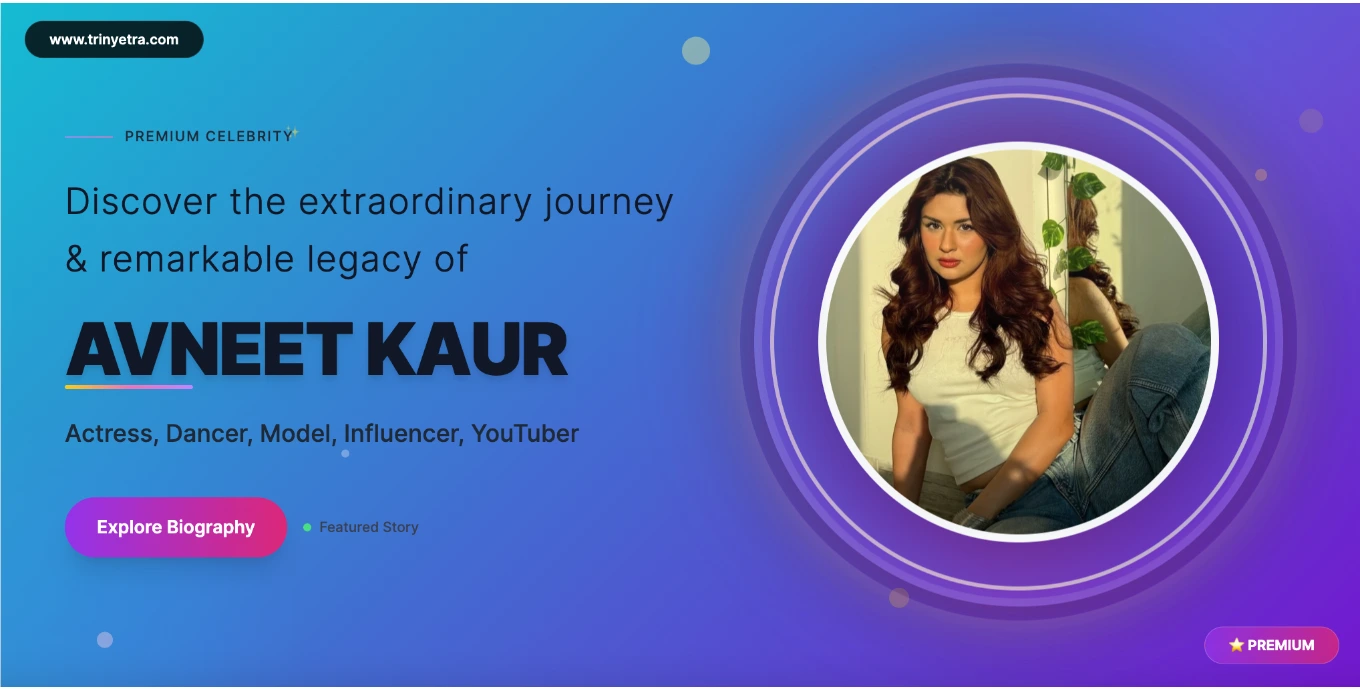 Bollywood
Bollywood
Aditya Narayan Biography, Age, Net Worth, Wife, Songs & Latest Updates
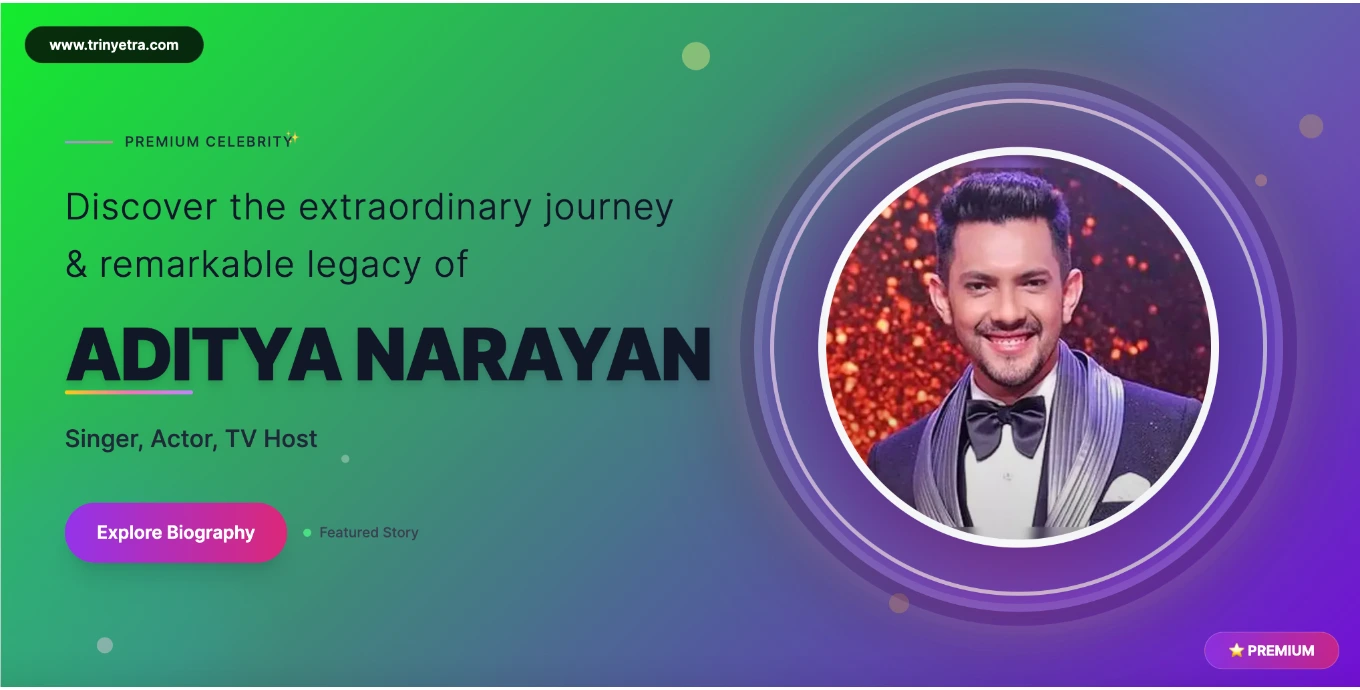
Aditya Narayan represents the perfect blend of musical legacy and contemporary entertainment success in Indian television. The son of legendary playback singer Udit Narayan, Aditya has carved his own identity as a versatile entertainer—excelling as a playback singer, television host, and actor. With an estimated net worth of $7.5 million (₹62 crore) in 2025, he stands as one of India's most recognized television personalities, having hosted over 15 seasons of iconic shows like Sa Re Ga Ma Pa and Indian Idol.
For Western audiences unfamiliar with Indian television, Aditya Narayan is comparable to Ryan Seacrest's role in American entertainment—a charismatic host who has become synonymous with India's biggest music reality shows. His journey from child artist to prime-time television anchor showcases the evolution of the Indian entertainment industry over three decades.
What makes Aditya's story particularly fascinating is his transition from living in his father's shadow to establishing his own brand. Despite being born into Bollywood royalty, he faced significant financial struggles, once revealing he had only ₹18,000 left in his account. This candid admission resonated with millions of Indians and international audiences alike, humanizing the often-glamorized world of celebrity offspring.
In 2025, Aditya continues to dominate Indian television while balancing family life with wife Shweta Agarwal and daughter Tvisha. His influence extends beyond entertainment—he's a social media powerhouse with millions of followers and a cultural bridge between traditional Bollywood music and modern digital entertainment.
| Real Name | Aditya Narayan Jha |
|---|---|
| Screen Name | Aditya Narayan |
| Date of Birth | August 6, 1987 (38 years in 2025) |
| Net Worth | $7.5 million / ₹62 crore (2025) |
| Height | 5'8" / 173 cm |
| Weight | 150 lbs / 68 kg |
| Industry | Bollywood Singer, TV Host, Actor |
| Languages | Hindi, English |
| Debut Film | Rangeela (1995) as child artist |
| Notable Shows | Sa Re Ga Ma Pa, Indian Idol, X Factor India |
| Marital Status | Married to Shweta Agarwal (2020) |
| Children | Tvisha Narayan Jha (daughter) |
Table of Contents
- Biography
- Early Life & Musical Foundation
- Education & Training
- Child Artist Career
- Singing Career & Playback Success
- Television Hosting Journey
- Acting Career & Shaapit
- Personal Life & Marriage
- Net Worth & Financial Journey
- Physical Appearance & Style
- Awards & Recognition
- Social Causes & Philanthropy
- Latest Projects & 2025 Updates
- Bollywood Buzz 2025
- Controversies & Public Image
- Interesting Facts & Trivia
- Social Media & Fan Following
- Industry Relationships
- Frequently Asked Questions
Aditya Narayan's Biography
Aditya Narayan Jha, known professionally as Aditya Narayan, is a multi-dimensional Indian entertainer who has successfully navigated the challenging terrain of being a star kid while establishing his unique identity. Born into the illustrious Narayan musical family, Aditya represents the second generation of Bollywood playback singing excellence.
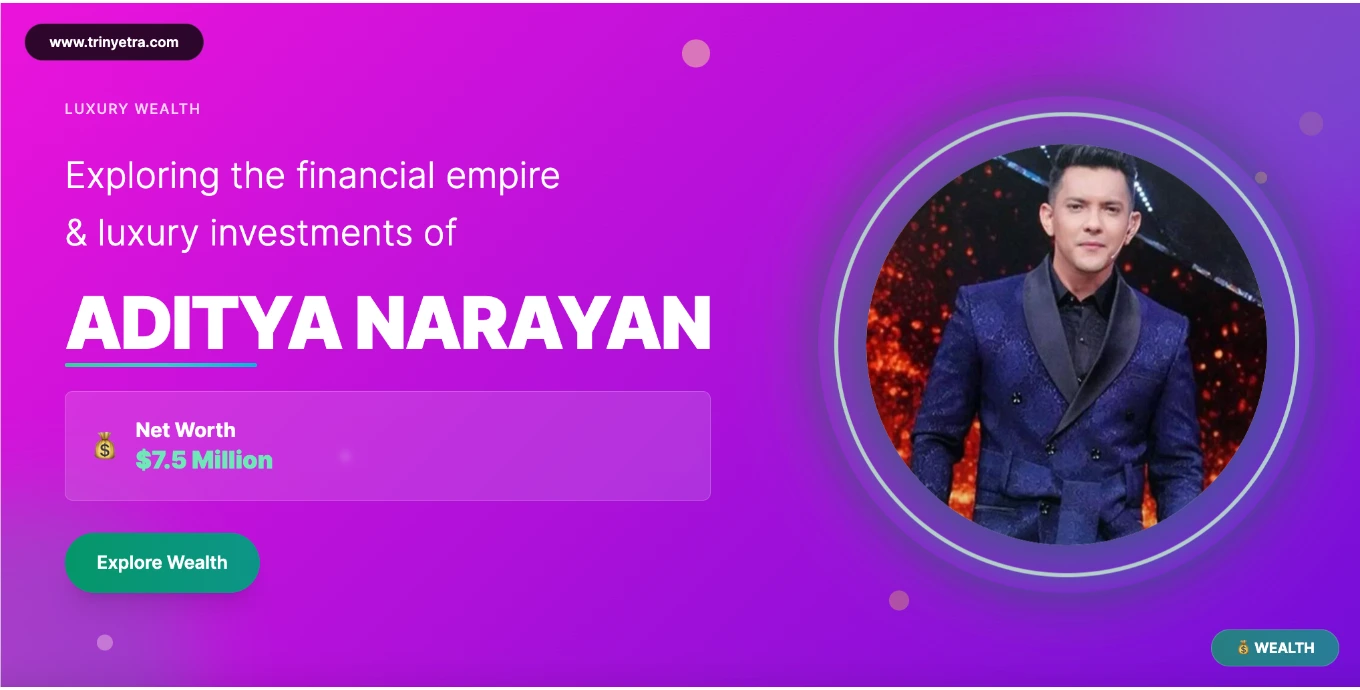
|
What sets Aditya apart in the crowded Bollywood landscape is his versatility. Unlike many star children who rely solely on their parents' legacy, Aditya diversified early,—conquering three distinct domains: playback singing, television hosting, and acting. His journey mirrors the evolution of Indian entertainment from the 1990s cinema-centric era to today's television and OTT-dominated landscape.
For international audiences, understanding Aditya's significance requires context about Indian television's reality show culture. Shows like Sa Re Ga Ma Pa (similar to American Idol) and Indian Idol have shaped India's music industry for two decades, and Aditya has been the face of this revolution. His hosting style—energetic, witty, and culturally rooted—has made him a household name across India, from metropolitan cities to small towns.
Aditya's cultural impact extends beyond entertainment. He represents the millennial generation of Bollywood—comfortable with Western influences while deeply rooted in Indian classical music traditions. His father Udit Narayan's legendary status in Bollywood playback singing created both opportunities and immense pressure, yet Aditya transformed this legacy burden into a launching pad.
The Mumbai-based entertainer has sung over 100 songs, hosted countless television episodes, and acted in several films. His transparent discussions about financial struggles, mental health, and work-life balance have made him relatable to India's aspirational middle class. In 2025, he continues to bridge traditional Bollywood values with contemporary entertainment formats, making him relevant to both older generations who grew up with his father's voice and Gen-Z audiences discovering him through social media.
Early Life & Musical Foundation
Birth and Family Heritage
Aditya Narayan was born on August 6, 1987, in Mumbai, Maharashtra—the epicenter of India's film industry. However, his family roots trace back to Baisi in Supaul district, Bihar, a humble town in eastern India. This dual identity—Mumbai metropolitan sophistication combined with small-town Bihar values—has profoundly shaped Aditya's personality and artistic sensibility.
His father, Udit Narayan, is a Padma Shri and Padma Bhushan awardee (India's fourth and third-highest civilian honors), having sung over 25,000 songs across multiple languages. For context, Udit Narayan is to Bollywood what Frank Sinatra was to Hollywood—a voice that defined an entire generation. Growing up as Udit Narayan's son meant childhood was intertwined with recording studios, film sets, and musical rehearsals.
| Hindi Name | आदित्य नारायण झा |
|---|---|
| Birthplace | Mumbai, Maharashtra |
| Family Origin | Baisi, Supaul, Bihar |
| Father's Profession | Legendary Playback Singer |
| Mother's Role | Homemaker and Family Anchor |
| Cultural Background | Maithil Brahmin (Bihar) |
Aditya's mother, Deepa Narayan, played a crucial stabilizing role in his upbringing. While Udit Narayan's career demanded constant travel and irregular schedules, Deepa ensured Aditya received a balanced childhood—academic discipline combined with artistic freedom. She managed the household while supporting her son's early forays into entertainment, a common but often unrecognized role of mothers in Bollywood families.
Musical Awakening
Aditya's introduction to music was inevitable but not forced. He began singing at the tender age of four, displaying natural talent that caught the attention of legendary music director Kalyanji Virji Shah (one-half of the iconic Kalyanji-Anandji duo who composed hundreds of Bollywood hits). This early recognition led to Aditya performing with the 'Little Wonders' troupe—a children's musical ensemble that toured internationally.
These childhood performances were transformative. Traveling across India and abroad exposed young Aditya to diverse musical traditions—from Carnatic classical music of South India to Western pop influences. This multicultural musical education would later become his signature strength, allowing him to effortlessly blend traditional Bollywood melody with contemporary beats.
The Narayan household was a melting pot of musical creativity. Aditya witnessed his father's recording sessions, observed how film music was created, and absorbed the technical nuances of playback singing—a unique Bollywood art form where singers record songs for actors who lip-sync on screen. This behind-the-scenes exposure gave Aditya insights that formal training couldn't provide.
Education & Training
Academic Foundation
Aditya Narayan completed his primary and secondary education at Utpal Shanghvi School in Mumbai, an institution known for balancing academics with extracurricular excellence. Despite his early entry into entertainment, his parents insisted on regular schooling—a decision Aditya later credited for keeping him grounded.
School years were challenging yet formative. Balancing shooting schedules with homework, managing celebrity attention while maintaining normal friendships, and dealing with constant comparisons to his father shaped Aditya's resilience. He was neither a studious prodigy nor a negligent student—he maintained average grades while excelling in music and drama activities.
Higher Education and Musical Training
After completing school, Aditya enrolled at Mithibai College of Commerce in Mumbai, one of the city's premier institutions. He pursued a Bachelor's degree in Commerce, a pragmatic choice that reflected his family's emphasis on educational qualifications alongside artistic pursuits. Indian middle-class values prioritize formal education, and even celebrity families encourage their children to have "backup options."
However, Aditya's true educational journey happened at Tech Music Schools in London, where he pursued a diploma in English Contemporary Music. This international exposure was pivotal—it refined his vocal techniques, introduced him to Western music production methods, and broadened his artistic perspective beyond Bollywood's traditional boundaries.
| Primary School | Utpal Shanghvi School, Mumbai |
|---|---|
| Undergraduate | Mithibai College of Commerce, Mumbai |
| Degree | Bachelor of Commerce (B.Com) |
| Music Training | Tech Music Schools, London |
| Music Qualification | Diploma in English Contemporary Music |
| Special Skills | Classical Indian vocals, Western contemporary music |
The London training was transformative. Aditya learned music theory, sound engineering basics, and performance psychology—knowledge that later helped him transition into hosting and acting. He returned to India with a polished skill set that combined his father's classical Bollywood singing legacy with contemporary global music trends.
His mentors during this period included not just formal teachers but also industry veterans who guided him through the complexities of entertainment careers. This combination of academic credentials and practical training positioned Aditya uniquely in an industry where talent alone often isn't sufficient for sustained success.
Child Artist Career & Bollywood Entry
The Rangeela Breakthrough
Aditya Narayan's silver screen debut came in 1995 with Rangeela, a Ram Gopal Varma-directed film that became a cult classic. Though his role as a child artist was small, the film's massive success—it grossed over ₹30 crore ($8 million then)—gave him valuable exposure to Bollywood's workings. For context, Rangeela starred Aamir Khan and Urmila Matondkar and redefined Bollywood's approach to music-driven narratives.
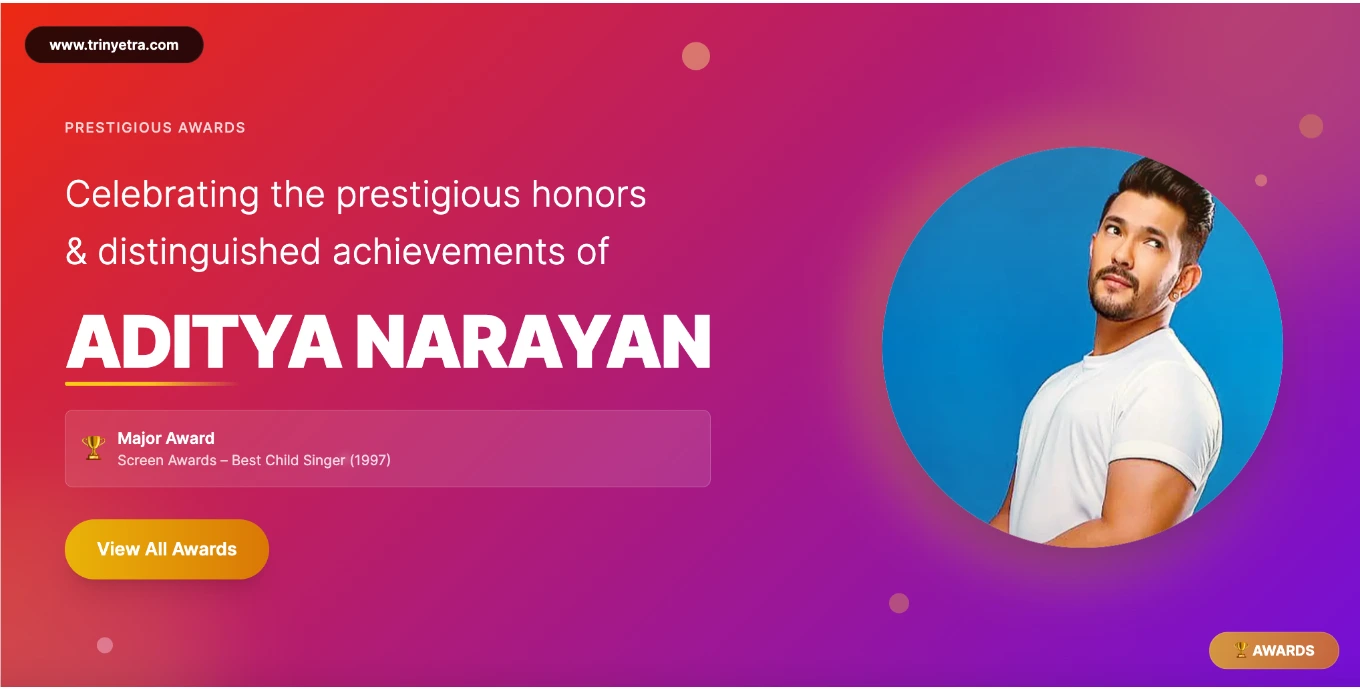
|
Singing Sensation at Age 10
While acting provided visibility, singing became Aditya's true calling. In 1996, at just nine years old, he sang "Chhota Baccha Jaan Ke" for the film Masoom—a song that became an instant playground anthem across India. The song's success was phenomenal; it won him the Screen Award for Best Child Singer and established him as more than just "Udit Narayan's son."
This early success opened floodgates. Aditya sang over 100 songs as a child artist between 1995 and 2002, working with legendary music directors like A.R. Rahman, Jatin-Lalit, and Anu Malik. His voice—innocent yet perfectly pitched—became synonymous with children's songs in Bollywood films. For Indian audiences, child Aditya's voice represents nostalgia for 1990s Bollywood's family-friendly entertainment era.
Jab Pyaar Kisise Hota Hai - The Defining Role
In 1998, Aditya landed a substantial acting role in Jab Pyaar Kisise Hota Hai opposite Salman Khan and Twinkle Khanna. He played Kabir Dhanrajgir, a pivotal character whose innocence drove the film's emotional core. The movie was a blockbuster, grossing ₹35 crore and establishing Salman Khan's commercial dominance.
Aditya's performance was lauded—he displayed natural acting ability, comic timing, and chemistry with senior actors. The film's success made him one of Bollywood's most sought-after child artists. However, unlike many child stars who struggle with adolescence, Aditya strategically withdrew from regular acting to focus on education and musical training—a decision that preserved his longevity in the industry.
| First Film | Rangeela (1995) |
|---|---|
| Breakout Song | "Chhota Baccha Jaan Ke" - Masoom (1996) |
| Major Acting Role | Kabir in Jab Pyaar Kisise Hota Hai (1998) |
| Total Child Songs | 100+ across various Bollywood films |
| Child Era Duration | 1995-2002 |
| Significant Achievement | Screen Award for Best Child Singer (1997) |
Singing Career & Playback Success
Transition to Adult Playback Singer
Transitioning from child artist to adult performer is notoriously difficult in entertainment—many child stars fade into obscurity. Aditya navigated this treacherous path successfully by reinventing himself as an adult playback singer in the mid-2000s. His voice matured into a versatile instrument capable of romantic ballads, peppy dance numbers, and emotional tracks.
However, the adult playback singing industry proved brutally competitive. Unlike his childhood, where novelty value gave him an advantage, adult Aditya competed with established voices like Sonu Nigam, KK, and Atif Aslam. The Bollywood music landscape had also transformed—music directors now preferred fresh voices or Pakistani singers who brought different textures.
Notable Playback Songs
Despite challenges, Aditya delivered several memorable tracks. Songs like "Ishq Wala Love" from Student of the Year showcased his ability to handle contemporary pop-infused Bollywood music. His voice suited youth-centric romantic films—energetic without being overpowering, melodious yet modern.
He also ventured into independent music, releasing singles that explored genres beyond traditional Bollywood. These independent projects, while not commercially massive, demonstrated his artistic ambitions and willingness to experiment. In the digital era, where playback singing alone doesn't guarantee stardom, Aditya's diversification into hosting became his strategic masterstroke.
| Career Phase | Notable Contribution | Impact |
|---|---|---|
| Child Singer (1995-2002) | 100+ children's songs | Established early recognition |
| Adult Playback (2005-2015) | Romantic and contemporary tracks | Moderate commercial success |
| Independent Music (2015+) | Digital singles and collaborations | Artistic exploration |
Musical Style and Influences
Aditya's singing style reflects his dual training—classical Bollywood melody inherited from his father, combined with Western contemporary techniques learned in London. He's comfortable with both traditional raga-based compositions and electronic dance music (EDM) infusions that dominate modern Bollywood soundtracks.
His vocal range, while not as extensive as his father's legendary four-octave capability, is versatile enough for most commercial requirements. Music critics often note his clear diction—important in Bollywood where lyrics drive emotional connection—and his ability to convey youthful energy, making him preferred for college romance and coming-of-age films.
Television Hosting Journey & Reality Show Dominance
The Sa Re Ga Ma Pa Breakthrough
If singing was Aditya's inheritance, television hosting became his empire. In 2007, he was selected to host Sa Re Ga Ma Pa Challenge—Zee TV's flagship music reality show that had been running successfully since 1995. This opportunity came at a crucial career juncture when his playback singing career needed momentum.
For Western audiences unfamiliar with Indian television's scale, Sa Re Ga Ma Pa is comparable to American Idol's cultural impact but with deeper roots—it's been discovering and nurturing talent for nearly three decades. The show's format combines singing competition with elaborate cultural performances, audience voting, and emotional storytelling that resonates across India's diverse population.
Aditya's hosting debut was risky—he replaced established anchors, and audience expectations were high. However, his natural charisma, musical knowledge, and ability to connect with contestants (having been a child performer himself) made him an instant hit. His Hindi commentary, peppered with English phrases, appealed to both urban and semi-urban audiences—a crucial demographic in Indian television.
Indian Idol Phenomenon
The hosting success led to bigger opportunities. Aditya became the face of Indian Idol—Sony TV's adaptation of the global Idol franchise. He has hosted over 10 seasons since 2010, making him synonymous with the show. Indian Idol commands viewership in millions each episode, and Aditya's presence is considered integral to its success.
What makes Aditya's hosting exceptional is his musical credibility. Unlike generic anchors, he can demonstrate singing techniques, guide contestants on performance nuances, and engage meaningfully with celebrity judges—often legendary singers and music directors. This expertise transforms hosting from mere announcement-reading into value-added entertainment.
| Show Name | Network | Seasons Hosted | Years Active | Impact |
|---|---|---|---|---|
| Sa Re Ga Ma Pa | Zee TV | 10+ | 2007-2025 | Established hosting credentials |
| Indian Idol | Sony TV | 10+ | 2010-2025 | Prime-time television dominance |
| X Factor India | Sony TV | 1 | 2011 | International format experience |
| Entertainment Ke Liye Kuch Bhi Karega | Sony TV | Multiple | 2011-2014 | Variety show hosting |
Hosting Style and Audience Connection
Aditya's hosting philosophy combines spontaneity with structure. He's known for witty one-liners, cultural references that span Bollywood classics to contemporary memes, and genuine emotional investment in contestants' journeys. Unlike scripted anchors, he improvises frequently—a skill honed through years of live television.
His rapport with judges—including Bollywood heavyweights like Neha Kakkar, Vishal Dadlani, and Himesh Reshammiya—showcases his industry standing. He can joke with them as equals, not a subordinate anchor, indicating respect earned through talent rather than just celebrity lineage. This dynamic makes shows more engaging, as viewers sense authentic camaraderie rather than rehearsed interactions.
In India's diverse linguistic landscape, Aditya's Hindi hosting—clear yet colloquial—bridges regional divides. He occasionally incorporates phrases from other Indian languages when interacting with regional contestants, displaying cultural sensitivity crucial for national television. This multilingual comfort, though subtle, significantly contributes to his pan-India appeal.
Acting Career & Shaapit Experience
The Shaapit Gamble
In 2010, Aditya made his adult acting debut as the lead in Shaapit, a supernatural horror-thriller directed by Vikram Bhatt. The film explored themes of reincarnation and cursed love—popular Bollywood horror tropes. Aditya played Aman Bhargav opposite Shweta Agarwal (who would later become his wife), and the role demanded an intense emotional range—from romantic hero to tormented soul.
Shaapit's production was ambitious for its time, with elaborate special effects, haunting background scores, and cinematography inspired by Hollywood horror. The film was released on March 19, 2010, with significant promotional buzz around Aditya's transformation from child artist to romantic lead. However, box office reality was harsh—the film underperformed commercially, earning approximately ₹8 crore against a budget of ₹15 crore.
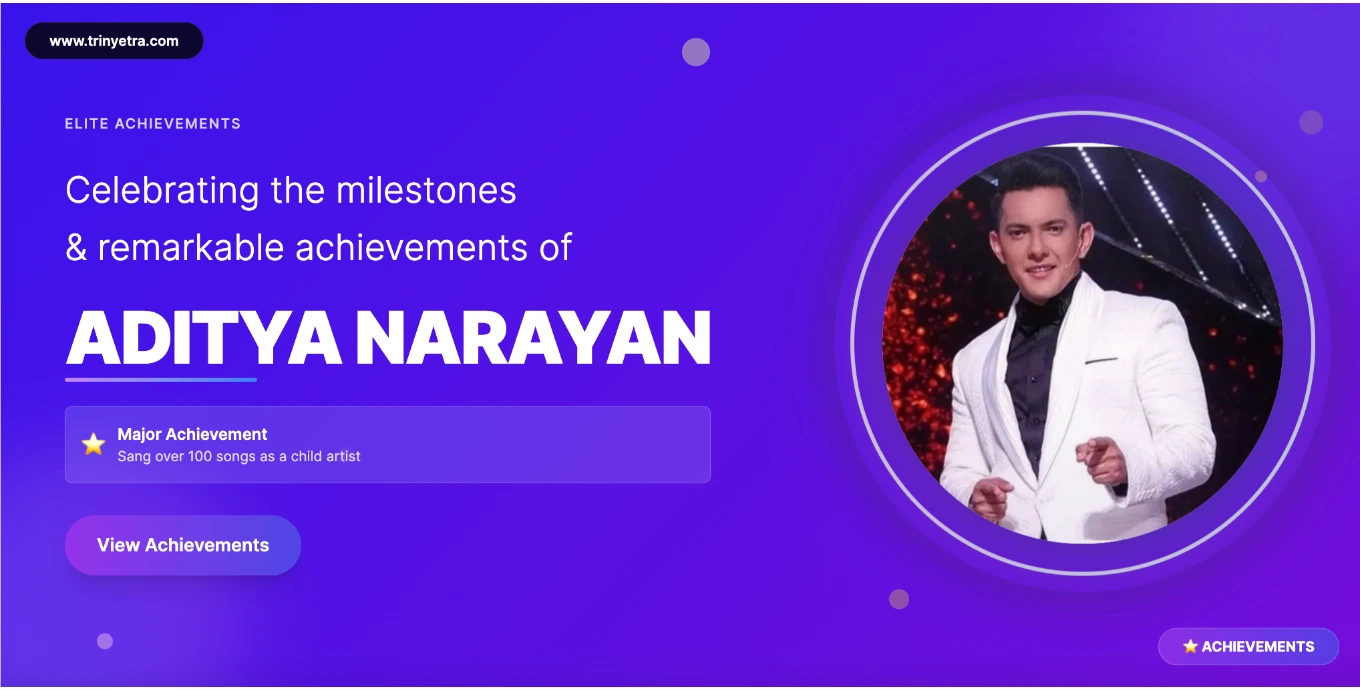
|
Critical Reception and Career Impact
Critics were mixed on Aditya's performance. Some appreciated his earnest attempt at carrying a film on his shoulders, noting his screen presence and dialogue delivery. Others felt he lacked the raw intensity required for horror-thriller protagonists, comparing him unfavorably to established actors. The film's weak script and predictable storyline didn't help his acting showcase.
Despite commercial failure, Shaapit provided invaluable lessons. Aditya learned the brutal economics of Bollywood—talent alone doesn't guarantee box office success, and star kids without godfather backing face particularly harsh scrutiny. The experience also revealed his strengths lay more in hosting and singing than traditional leading-man roles requiring aggressive machismo or action sequences.
Post-Shaapit Acting Choices
After Shaapit's lukewarm reception, Aditya strategically avoided lead roles in films, instead focusing on television hosting where he was already excelling. He appeared in cameos, special appearances in music videos, and television fiction shows, but consciously chose not to stake his career solely on Bollywood films—a pragmatic decision that preserved his market value.
This selective approach contrasts sharply with many star kids who keep attempting films despite repeated failures, damaging their brand. Aditya's self-awareness—recognizing hosting as his forte rather than forcing an acting career—demonstrates maturity often lacking in celebrity offspring. In interviews, he's candidly stated that while he loves acting, he wouldn't pursue it at the cost of his television success.
Personal Life, Marriage & Family Values
Love Story with Shweta Agarwal
Aditya Narayan's romantic journey with Shweta Agarwal is Bollywood-worthy itself—a decade-long relationship that weathered career pressures, public scrutiny, and personal challenges before culminating in marriage. The couple first met during Shaapit's filming in 2010, where initial professional collaboration sparked a deeper connection.
However, unlike impulsive Bollywood romances, Aditya and Shweta took ten years to formalize their relationship. This extended courtship period reflected both maturity and challenges—Aditya's career was stabilizing through hosting, while Shweta, an actress herself, navigated Bollywood's unpredictable terrain. Indian society, despite modernization, still scrutinizes live-in relationships, especially among public figures, adding external pressure.
The ISKCON Temple Wedding
On December 1, 2020, amidst the COVID-19 pandemic, Aditya and Shweta married in an intimate ceremony at ISKCON Temple, Juhu, Mumbai. The wedding was deliberately low-key—only close family and friends attended, contrasting with typical extravagant Bollywood weddings. This simplicity reflected pandemic constraints but also the couple's preference for privacy over spectacle.
ISKCON Temple holds spiritual significance—it's associated with Vaishnavism, a major Hindu tradition emphasizing devotion to Krishna. For many Mumbai celebrities, ISKCON Juhu is the preferred venue for its serene atmosphere and spiritual authenticity. The temple wedding aligned with Aditya's traditional values despite his modern public persona, showcasing the cultural duality common among millennial Indian celebrities.
| Wife's Name | Shweta Agarwal |
|---|---|
| Profession | Actress (Bollywood) |
| Relationship Duration | 10 years (2010-2020) |
| Marriage Date | December 1, 2020 |
| Wedding Venue | ISKCON Temple, Juhu, Mumbai |
| Wedding Type | Intimate, Traditional Hindu ceremony |
| Children | Tvisha Narayan Jha (daughter, born 2024) |
Fatherhood and Family Life
In February 2024, Aditya and Shweta welcomed their daughter, Tvisha Narayan Jha. The name "Tvisha" means "brilliant" or "radiant" in Sanskrit—a traditional yet modern choice reflecting the couple's cultural values. Aditya announced the birth via Instagram, sharing heartfelt posts that went viral, garnering millions of likes and congratulatory messages.
Fatherhood has visibly transformed Aditya. In recent interviews, he discusses work-life balance, reduced late-night shoots, and prioritizing family time—themes resonating with India's increasingly nuclear family structures. Unlike previous generations, where fathers remained emotionally distant, millennial Indian fathers like Aditya actively participate in childcare, share parenting content on social media, and normalize paternal involvement.
The Narayan household represents modern Indian family values—Deepa Narayan (Aditya's mother) actively supports grandparenting, Udit Narayan's legendary status brings occasional public interest, and Shweta balances selective acting projects with motherhood. This joint family system, while adapted to contemporary needs, maintains traditional Indian emphasis on intergenerational support and extended family bonds.
Relationship Philosophy and Public Persona
Aditya has been refreshingly candid about relationships in interviews. He's discussed the challenges of dating as a celebrity, the importance of trust in long-distance relationships (when either partner is shooting), and the pressure of maintaining public image while nurturing private intimacy. This transparency has endeared him to younger audiences navigating modern relationship complexities.
Unlike many Bollywood celebrities who maintain strict privacy, Aditya occasionally shares family moments on social media—birthday celebrations, vacation snippets, and candid home videos. This strategic visibility humanizes him, transforming him from a "television host" into a relatable family man, which strengthens his brand authenticity.
Net Worth, Financial Journey & Lifestyle
Current Net Worth and Income Sources
Aditya Narayan's estimated net worth in 2025 stands at $7.5 million (approximately ₹62 crore), positioning him among India's wealthiest television personalities. This impressive figure represents decades of diversified income streams—a financial strategy that distinguishes sustainable celebrity wealth from fleeting Bollywood fortunes.
For international context, while $7.5 million may seem modest compared to Hollywood A-listers, it's substantial in India's entertainment economy, where television anchors typically earn significantly less than film actors. Aditya's wealth places him in India's top 1% income bracket, reflecting smart career choices and financial planning rather than just celebrity privilege.
| Net Worth (2025) | $7.5 million / ₹62 crore (approx.) |
|---|---|
| Annual Income | ₹8-10 crore ($1-1.2 million) |
| Monthly Income | ₹70-85 lakh ($85,000-100,000) |
| Per Episode Fee (TV) | ₹5-7 lakh ($6,000-8,500) |
| Brand Endorsements | ₹50 lakh-1 crore per deal |
| Concert/Live Shows | ₹15-25 lakh per event |
| Other Income | Music royalties, digital content, investments |
Primary Revenue Streams
Television hosting constitutes Aditya's largest income source. With Indian Idol and Sa Re Ga Ma Pa episodes running 40-50 per season, and each episode reportedly earning him ₹5-7 lakh, seasonal television income alone exceeds ₹2-3 crore annually. Reality show hosting in India has evolved into a lucrative profession, with top anchors commanding film-actor-level fees.
Brand endorsements add substantial revenue. Aditya endorses fashion brands, technology products, and lifestyle services—his young, urban appeal making him attractive to brands targeting India's aspirational middle class. These endorsement deals typically run multi-year contracts worth ₹50 lakh to ₹1 crore each, providing stable income beyond episodic television work.
Live concerts and musical shows provide additional earnings. Aditya performs at corporate events, college festivals, weddings, and music festivals across India and internationally, wherever Indian diaspora communities exist. These performances, ranging from ₹15-25 lakh per event, offer cash-flow flexibility and keep him connected to live audiences—crucial for performers who primarily work in studios.
The Financial Struggle Revelation
In a candid 2020 interview that went viral, Aditya revealed he once had only ₹18,000 left in his bank account despite being a celebrity. This shocking admission—coming during pandemic-induced uncertainty—resonated deeply with millions facing financial insecurity. For someone perceived as born with a silver spoon star kid, this vulnerability humanized him profoundly.
The context was crucial: Aditya discussed how irregular work during COVID-19 lockdowns, combined with Mumbai's exorbitant living costs and financial commitments, had depleted savings. He didn't frame it as a sob story but a realistic acknowledgment that entertainment careers—even successful ones—require constant hustle. This transparency contrasted sharply with typical celebrity financial opacity.
The revelation sparked important conversations about financial planning in creative industries, the myth of perpetual celebrity wealth, and the mental health impacts of financial stress. Aditya's honesty made him a role model for discussing money matters openly—breaking Indian cultural taboos around discussing financial struggles, especially among successful individuals.
Assets and Property
Aditya owns property in Mumbai—one of the world's most expensive real estate markets. His residence, reportedly in Mumbai's western suburbs, reflects a successful television personality lifestyle—spacious but not ostentatious, comfortable yet private. Mumbai property ownership itself indicates significant wealth; even modest apartments in decent neighborhoods cost several crores.
His luxury vehicle collection includes a Mercedes-Benz GL350 SUV—a practical yet premium choice for Mumbai's challenging roads and traffic. The GL350, costing approximately ₹80 lakh-1 crore, balances celebrity status expectations with functional transportation needs. Unlike some Bollywood stars with multiple supercar collections, Aditya's automotive choices reflect practical luxury.
| Residence | Mumbai Western Suburbs - ₹5-8 crore (estimated) |
|---|---|
| Primary Vehicle | Mercedes-Benz GL350 SUV - ₹80 lakh-1 crore |
| Investment Portfolio | Real estate, mutual funds, fixed deposits |
| Luxury Spending | Moderate - focuses on experiences over possessions |
Lifestyle Philosophy
Aditya's lifestyle reflects millennial values—prioritizing experiences, family time, and health over conspicuous consumption. He vacations internationally but shares eco-conscious travel choices. He dresses fashionably but mixes high-street brands with affordable options, making his style accessible to fans who emulate celebrity fashion on limited budgets.
His social media showcases a balanced lifestyle—gym workouts indicating fitness commitment, home-cooked meal posts celebrating simple pleasures, and family moments emphasizing relationship over materialism. This authenticity—whether calculated or genuine—resonates with India's aspirational class that values success but fears losing cultural groundedness.
Physical Appearance, Style & Fitness
Physical Characteristics
| Height | 5 feet 8 inches / 173 cm |
|---|---|
| Weight | 150 lbs / 68 kg (approx.) |
| Body Type | Athletic, well-maintained |
| Eye Color | Dark Brown |
| Hair Color | Black (occasionally experiments with styling) |
| Skin Tone | Wheatish-Fair |
| Distinctive Features | Expressive eyes, charming smile, youthful appearance |
| Body Measurements | Chest: 40", Waist: 30", Biceps: 14" |
Aditya Narayan maintains a physique that balances television appearance requirements with realistic fitness goals. At 5'8" (173 cm), he's average height for Indian men but projects a confident screen presence through posture and styling. His 68 kg weight is proportionate, avoiding extreme bodybuilding trends while maintaining defined muscle tone suitable for television's HD scrutiny.
Fitness Routine and Health Philosophy
Aditya follows regular gym routines focusing on functional fitness rather than aesthetic bodybuilding. His workout regimen includes cardio for stamina (essential for long television shoots requiring standing for hours), weight training for muscle maintenance, and flexibility exercises. He's discussed the importance of fitness for mental health—exercise as stress management rather than purely physical transformation.
Unlike Bollywood actors who undergo extreme physical transformations for roles, Aditya maintains consistent fitness throughout the year. This sustainability reflects his career reality—television hosts can't afford months-long transformation periods that film actors undertake between projects. His approach resonates with regular people seeking maintainable fitness rather than unrealistic body standards.
Style Evolution and Fashion Sense
Aditya's fashion journey mirrors Indian television's style evolution. Early career saw him in typical television host attire—formal shirts, blazers, and conventional styling. As his confidence grew and television aesthetics became more casual, his style loosened—incorporating streetwear, athleisure, and contemporary menswear trends.
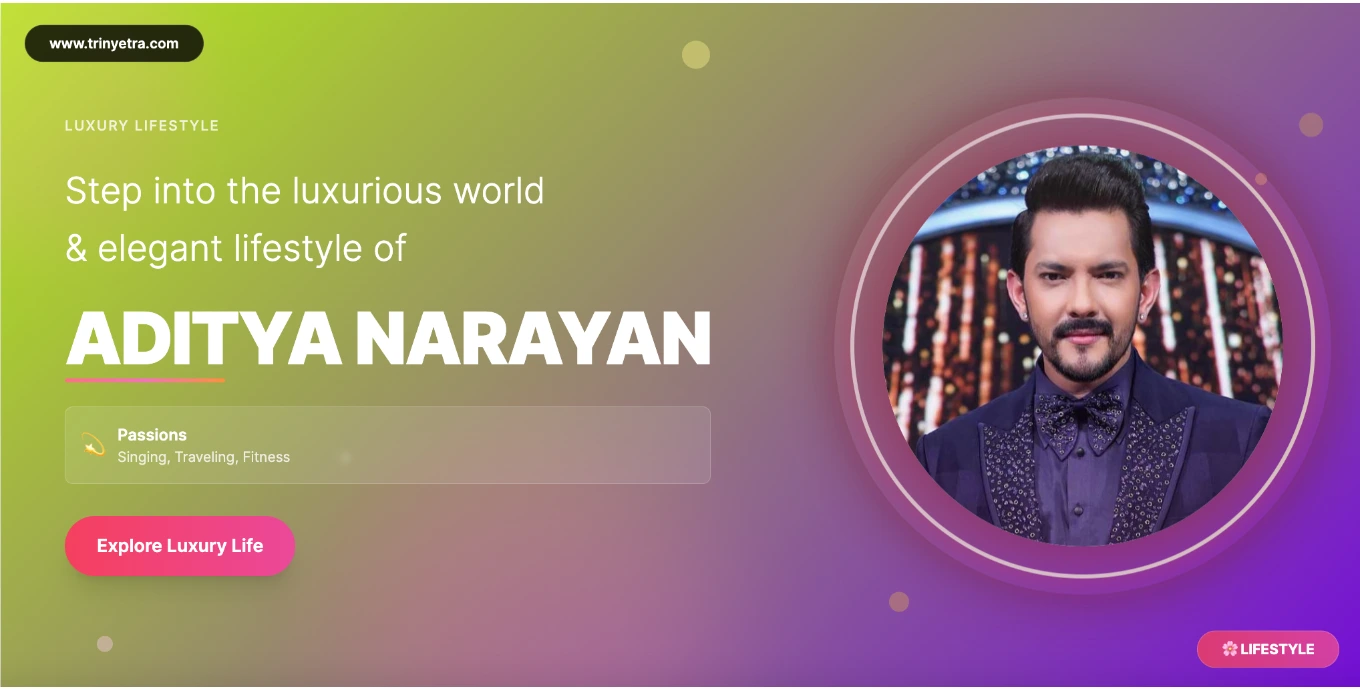
|
His current style is "smart casual"—fitted jeans with branded sneakers, graphic tees layered with jackets, and occasional ethnic wear for cultural television segments. He mixes high-street brands like Zara and H&M with luxury labels, making fashion relatable. His sneaker collection reflects global streetwear culture's influence on Indian fashion—Nike, Adidas, and limited-edition collaborations feature prominently.
For formal television appearances, Aditya opts for tailored blazers, designer kurtas (traditional Indian tops), and occasionally sherwanis (elaborate Indian formal wear) during festival episodes. This versatility—transitioning from casual to ethnic to formal—demonstrates styling awareness crucial for television personalities who must adapt to show formats.
Grooming and Personal Care
Aditya maintains a well-groomed appearance essential for television close-ups. His hairstyle has evolved—from gelled spikes in an early career to more natural, textured cuts currently popular. He experiments with facial hair, alternating between a clean-shaven look and light stubble depending on show requirements and personal preference.
His skincare routine, though not publicly detailed, is evident in his maintained complexion despite television lighting and makeup demands. Male grooming in India has become mainstream, and television personalities like Aditya normalize skincare, hair care, and appearance maintenance for men—previously considered taboo or "unmasculine" in traditional Indian society.
Awards, Recognition & Industry Standing
Major Awards and Accolades
Aditya Narayan's trophy cabinet reflects his dual excellence in singing and hosting. His first major recognition came at age 10 with the Screen Award for Best Child Singer in 1997 for "Chhota Baccha Jaan Ke." This early validation, while for the children's category, established credibility beyond nepotistic advantages.
| Year | Award | Category | Work/Reason |
|---|---|---|---|
| 1997 | Screen Awards | Best Child Singer | "Chhota Baccha Jaan Ke" - Masoom |
| 2007 | Indian Television Academy Awards | Glamour Face Of The Year – Male | Television hosting |
| 2012 | Boroplus Gold Awards | Most Stylish Anchor (Male) | Indian Idol, Sa Re Ga Ma Pa |
| 2015 | Indian Telly Awards | Best Anchor (Music/Film Based) | Sa Re Ga Ma Pa |
Television Industry Recognition
The Indian Television Academy Award for Glamour Face Of The Year – Male (2007) marked his transition from child artist to adult entertainment personality. This recognition came during his Sa Re Ga Ma Pa hosting debut year, validating his screen presence and style quotient—crucial factors in television success beyond just talent.
Multiple Indian Telly Awards nominations for Best Anchor testify to consistent hosting excellence. While he hasn't won every nomination, regular recognition indicates industry respect and audience voting support. Television awards in India, unlike film awards often criticized for bias, depend heavily on viewer polls, making these nominations genuine popularity indicators.
Musical Achievements Beyond Awards
Beyond formal awards, Aditya's musical legacy includes singing over 100 Bollywood songs—a quantitative achievement few singers accomplish. His songs have collectively garnered hundreds of millions of streams across digital platforms, with childhood classics like "Chhota Baccha Jaan Ke" achieving nostalgic evergreen status among millennials.
His collaboration with legendary music directors—A.R. Rahman, Anu Malik, Jatin-Lalit—represents a qualitative achievement. These industry legends don't work with singers purely for nepotistic favors; their music demands vocal capabilities Aditya demonstrably possesses. This professional validation often matters more than trophy collections.
Industry Standing and Peer Respect
Aditya's standing within the Indian entertainment industry is unique—he's simultaneously an insider (through his father's legacy) and an outsider (having built a hosting career independently). Senior musicians respect his musical lineage and technical knowledge. Television producers value his reliability, professionalism, and audience connection. Bollywood actors appreciate his non-competitive friendship—he's not vying for hero roles, making relationships uncomplicated.
His ability to host shows, judged by industry stalwarts like Anu Malik, Neha Kakkar, and Shreya Ghoshal—singers more commercially successful than him—without ego conflicts indicates maturity. This professional grace, combined with talent, ensures sustained industry relevance beyond temporary celebrity buzz.
Social Causes, Philanthropy & Cultural Impact
Mental Health Advocacy
Aditya Narayan has emerged as an unexpected mental health advocate through candid discussions about career pressures, financial anxiety, and celebrity expectations. His revelation about having only ₹18,000 in a bank account transcended mere financial disclosure—it became a conversation starter about mental health impacts of financial insecurity, especially for men conditioned to hide vulnerability.
In several interviews post-revelation, Aditya discussed therapy, seeking professional help, and normalizing mental health support—crucial messaging in India where mental health stigma remains pervasive. For young men facing career uncertainty, his openness provided validation that successful-seeming individuals also struggle, reducing shame around seeking help.
Supporting Emerging Talent
Through his hosting roles on talent shows, Aditya actively mentors aspiring singers. Beyond scripted encouragement, he provides technical singing advice, industry insights, and emotional support to contestants—many from small towns facing overwhelming Mumbai entertainment industry pressures. Former contestants credit him with career guidance extending beyond television cameras.
He's also supported several independent musicians by featuring their work on his social media, providing exposure to his millions of followers. In India's star-driven entertainment ecosystem, where breaking through requires connections, such platform-sharing from established personalities significantly impacts emerging artists' visibility.
Cultural Bridge-Building
Aditya's multilingual hosting and inclusive approach on television showcase India's diversity positively. He celebrates contestants from all regional backgrounds—Northeast India, South India, rural heartlands—ensuring representation and respect. In a country where linguistic and regional tensions sometimes surface, his inclusive hosting style promotes national integration through cultural appreciation.
His music selections and performances blend classical Indian traditions with contemporary global sounds, introducing younger audiences to traditional music while keeping it relevant. This cultural bridge-building—honoring heritage while embracing modernity—defines his broader societal contribution beyond entertainment value.
Charitable Work and Social Responsibility
While not extensively publicized, Aditya participates in charity concerts and fundraising events for various causes. During the COVID-19 pandemic, he performed in virtual concerts supporting healthcare workers and raising funds for medical supplies. He's associated with music education initiatives providing underprivileged children access to musical training.
His approach to philanthropy reflects millennial celebrity activism—less about grand donations, more about leveraging social media influence, raising awareness, and encouraging followers to contribute. This democratized charity model resonates with younger audiences who prefer actionable involvement over celebrity-driven charity spectacles.
Latest Projects & Current Work (2025)
Ongoing Television Commitments
In 2025, Aditya Narayan continues dominating Indian television as primary host of Indian Idol Season 15 on Sony TV. The current season, launched in September 2025, features judges Shreya Ghoshal, Vishal Dadlani, and Badshah—a mix of classical pedigree and contemporary rap influence reflecting Bollywood's evolving music landscape.
Simultaneously, he hosts Sa Re Ga Ma Pa 2025 on Zee TV, maintaining his decade-plus association with the show. This dual hosting commitment—managing two prime-time reality shows simultaneously—demonstrates his work capacity and irreplaceable value to both competing networks. Few anchors command such cross-network demand, highlighting his unique market position.
Digital Content and YouTube Presence
Adapting to digital media's rise, Aditya has intensified YouTube and Instagram content creation. His YouTube channel features behind-the-scenes television content, singing sessions, vlogs with wife Shweta and daughter Tvisha, and collaborative videos with other entertainers. This digital presence extends his reach beyond television's scheduled viewing to on-demand consumption younger audiences prefer.
Recent viral content includes his daughter Tvisha's early musical attempts—adorable videos resonating with parent audiences and introducing next-generation Narayan to fans. These family-centric posts generate millions of views, demonstrating his content versatility beyond professional hosting.
Music Releases and Collaborations
Aditya released several independent singles in 2024-2025, exploring genres beyond Bollywood playback. His single "Mangta Hai Kya" blended hip-hop with traditional Indian instruments, showcasing his willingness to experiment musically. While not chartbuster hits, these releases maintain his identity as a musician beyond a host, crucial for artistic credibility.
He's also collaborated with contemporary music producers and YouTubers, tapping into the indie music scene thriving outside Bollywood's formal structures. These collaborations expose him to younger demographics discovering music through Spotify playlists and YouTube recommendations rather than traditional film soundtracks.
| Current Project | Platform | Status | Details |
|---|---|---|---|
| Indian Idol Season 15 | Sony TV | Ongoing (Sep 2025-) | Prime-time Saturday-Sunday hosting |
| Sa Re Ga Ma Pa 2025 | Zee TV | Ongoing | Weekly episodes, multi-format hosting |
| YouTube Content | Digital | Regular uploads | Vlogs, music, family content |
| Independent Singles | Music Streaming | 2024-2025 releases | Experimental genres, collaborations |
| Live Concerts | Events | Monthly schedule | College festivals, corporate events, weddings |
Brand Partnerships and Endorsements
In 2025, Aditya continues endorsing multiple brands targeting urban youth. His partnerships include fashion e-commerce platforms, grooming products, and lifestyle apps. These endorsements leverage his dual appeal—musical credibility combined with hosting personality, making him suitable for both aspirational and accessible brand positioning.
Recent brand campaigns emphasize fatherhood and family values—a strategic shift aligning with his life stage. Brands targeting young parents or family-oriented products find his authentic family man image more valuable than generic celebrity endorsement, resulting in sustained partnership renewals.
Bollywood Buzz 2025 - Latest Updates
Bollywood Buzz 2025 - Latest Updates
- September 2025: Launched Indian Idol Season 15 with record-breaking premiere ratings, featuring emotional contestant stories and viral social media moments that trended nationally.
- August 2025: Celebrated daughter Tvisha's first birthday with an intimate family gathering, sharing heartwarming posts that garnered 5+ million likes across social media platforms.
- July 2025: Released collaborative single with emerging indie artist, blending Bollywood melody with electronic dance music, receiving 10+ million YouTube views within first month.
- June 2025: Announced as host for upcoming celebrity singing reality show format, marking expansion into premium OTT platform content alongside traditional television work.
- May 2025: Completed successful 15-city concert tour across India and the Middle East, performing for Indian diaspora communities and earning critical acclaim for live vocal performances.
Controversies, Challenges & Public Image
The Phone-Throwing Incident (2024)
In February 2024, Aditya Narayan faced significant backlash after a viral video showed him snatching and throwing a fan's phone during a concert in Bhilai, Chhattisgarh. The incident sparked heated debates about celebrity behavior, entitlement, and concert etiquette across social media platforms and mainstream media.
The video context showed a crowded stage area with fans reaching out while Aditya performed. A phone appeared dangerously close—whether accidentally or deliberately—prompting his aggressive reaction. While some defended him, citing safety concerns and constant phone interruptions disrupting performances, the majority criticized the response as disproportionate and disrespectful toward fans who paid to attend.
Aditya initially remained silent, then issued a measured statement acknowledging his reaction was "inappropriate" while explaining performance frustrations. The controversy highlighted broader issues—artists' right to uninterrupted performance versus fans' expectation of accessibility, especially in India, where celebrity-fan boundaries differ from Western concert cultures.
Handling Criticism and Recovery
Unlike some celebrities who double down defensively during controversies, Aditya chose damage control through accountability. He apologized publicly, increased positive social media engagement, and demonstrated improved concert behavior in subsequent performances. This professional crisis management prevented long-term reputation damage.
The incident also sparked industry conversations about concert security, artist-audience protocols, and mental health pressures performers face. Several industry colleagues supported Aditya privately, acknowledging that constant phone-waving in the faces during performances creates legitimate frustration, even if his specific reaction was problematic.
Financial Struggle Revelation - Controversy or Honesty?
His 2020 revelation about having only ₹18,000 in bank account generated mixed reactions. While many praised his honesty, critics questioned the timing—some alleged it was attention-seeking during the pandemic when everyone faced hardships, while others speculated it was a publicity stunt for upcoming projects.
However, contextual evidence supported genuine disclosure. Aditya's detailed explanation about irregular work, financial commitments, and the entertainment industry's unpredictability rang true for industry insiders. The vulnerability resonated because it challenged celebrity wealth assumptions without seeking pity—a delicate balance he navigated successfully.
Nepotism Debates and Star Kid Scrutiny
As Udit Narayan's son, Aditya inevitably faces nepotism accusations—a particularly sensitive topic in Bollywood following several high-profile debates about industry access and privilege. Critics argue his opportunities stemmed from family connections rather than pure merit, while supporters cite his hosting success as a self-made achievement beyond singing lineage.
Aditya addresses this pragmatically in interviews—acknowledging that initial opportunities came through his father's network, but sustaining a career for 30+ years required talent and hard work. His hosting dominance, a field where Udit Narayan has no influence, serves as a counterargument to nepotism critics. This nuanced acceptance, rather than defensive denial, has earned him respect.
Current Public Perception
Despite occasional controversies, Aditya maintains a largely positive public image. His hosting work generates consistent goodwill, his family man image appeals to traditional values, and his openness about struggles creates relatability. Social media sentiment analysis shows predominantly favorable audience perception, with critics forming a vocal minority rather than mainstream opinion.
His ability to weather controversies without career-derailing consequences indicates solid fan foundation and industry support. Unlike celebrities whose controversies define their narrative, Aditya's controversies remain footnotes in an otherwise successful career trajectory—a testament to reputation resilience built through consistent work and an authentic public persona.
Interesting Facts & Trivia About Aditya Narayan
Musical Journey Surprises
- Aditya Narayan sang his first song at age four—"Ek Duuje Ke Liye"—in a wedding function, displaying pitch-perfect singing that convinced his father of his natural talent. This wasn't a trained performance but spontaneous singing that shocked family guests.
- He recorded over 100 songs as a child artist between ages 6-14, making him one of Bollywood's most prolific child singers ever. This record remains largely unbroken—contemporary child artists rarely sustain such an extensive filmography before adolescence.
- His childhood stage name was "Aadi," used in several song credits during the 1990s. Many millennials who sang his songs growing up didn't realize "Aadi" and "Aditya Narayan" were the same person until later revelations.
- Aditya can sing in seven languages—Hindi, English, Bhojpuri, Bengali, Tamil, Telugu, and Marathi—though he's most comfortable in Hindi and English. This linguistic versatility reflects India's multilingual entertainment landscape.
- His biggest career regret is not pursuing classical music training more seriously. In interviews, he's admitted that despite father's legendary classical foundation, he focused more on contemporary music, occasionally limiting his versatility.
Film and Television Secrets
- Aditya's role in "Jab Pyaar Kisise Hota Hai" was initially offered to another child actor who declined. His last-minute casting turned fortuitous—the film's success established him as a credible actor beyond a singing child artist.
- He almost hosted "Bigg Boss" (India's biggest reality show)—advanced negotiations happened in 2015, but ultimately producers chose Salman Khan's continuation. Aditya later admitted this was a blessing in disguise, as Bigg Boss hosting requires a different temperament than his natural style.
- During "Shaapit" filming, Aditya and Shweta Agarwal (his future wife) couldn't stand each other initially. Their on-set professional conflicts ironically created chemistry that translated well on screen, and friendship developed only post-filming.
- He holds the unofficial record for most consecutive reality show hosting seasons in Indian television—over 25 seasons combined across Indian Idol and Sa Re Ga Ma Pa without replacement, indicating unprecedented longevity.
- Aditya writes many of his own hosting scripts and one-liners rather than relying entirely on teleprompters, explaining his natural, spontaneous hosting style compared to rigidly scripted anchors.
Personal Life Quirks
- He's an avid gamer and owns multiple gaming consoles—PlayStation 5, Xbox Series X, and a gaming PC. His late-night gaming sessions often feature in Instagram stories, revealing an unexpected hobby for someone perceived as a traditional entertainer.
- Aditya collects sneakers obsessively—his collection reportedly exceeds 150 pairs, including rare limited-editions and collaborations. This sneakerhead passion connects him to global streetwear culture beyond Bollywood's usual fashion interests.
- Despite being a singer, he can't read traditional musical notation fluently—he learns songs by ear and memory, relying on extraordinary aural retention rather than sight-reading. This revelation surprised many who assumed formal musical training.
- He's afraid of heights and avoids adventure activities like bungee jumping or skydiving, despite multiple celebrity reality show offers involving such stunts. This phobia has limited certain career opportunities, but he refuses to overcome it for professional reasons.
- Aditya cooks surprisingly well—his specialty is North Indian cuisine, particularly Bihari dishes from his family's home state. He often cooks for wife Shweta, contradicting traditional gender roles in Indian households.
Money and Lifestyle Insights
- His first major purchase after Indian Idol hosting success was buying a house for his parents—fulfilling the classic Indian son's duty of providing for parents, which he considers his proudest achievement beyond any award.
- Aditya invests heavily in mutual funds and SIPs (Systematic Investment Plans) rather than risky stock trading, following conservative financial planning advice after experiencing earlier monetary instability.
- He doesn't own a private jet or multiple luxury cars like many Bollywood A-listers—his single Mercedes SUV serves all purposes, reflecting a practical luxury philosophy over ostentatious displays.
- During a financial low point with ₹18,000 in an account, he sold his car and downgraded apartment rather than borrowing money, demonstrating pride and self-reliance, sometimes criticized as excessive ego.
Celebrity Connections
- Aditya is extremely close to Salman Khan's family, having worked with Salman as a child artist. This connection occasionally helps his career through industry networking, though he maintains it's a personal friendship beyond professional utility.
- His father, Udit Narayan, once refused a prestigious award on Aditya's behalf, believing his son's work didn't merit particular recognition that year—a controversial decision teaching Aditya about deserving success versus accepting everything offered.
- Neha Kakkar, frequent Indian Idol judge, considers Aditya her protective elder brother—their on-screen sibling-like chemistry is genuine off-screen friendship built over a decade of working together.
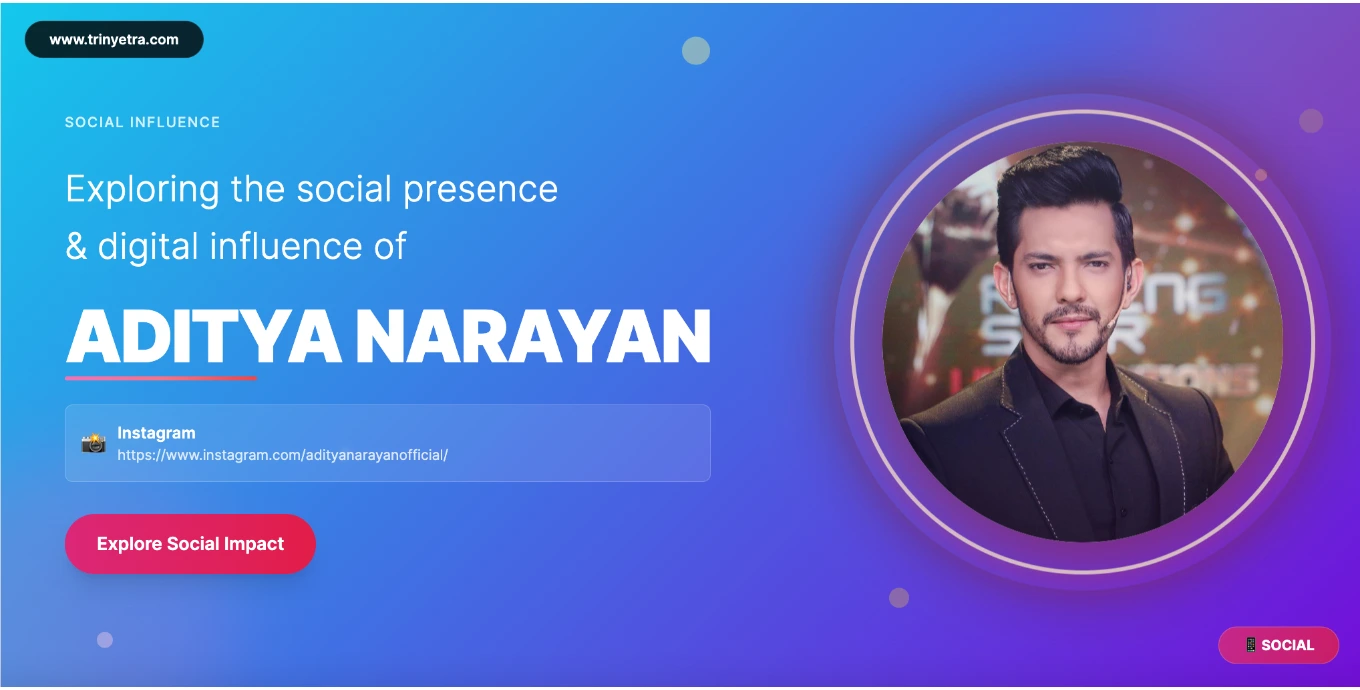
|
Social Media Presence & Digital Influence
Platform-wise Following
Aditya Narayan commands significant social media influence with millions of followers across platforms, positioning him among India's top television personality influencers. His digital presence balances professional content with personal glimpses, creating an authentic connection that transcends traditional celebrity-fan dynamics.
| Platform | Handle | Followers | Content Type |
|---|---|---|---|
| @adityanarayanofficial | 4.8 million followers | Behind-the-scenes, family moments, fashion, television updates | |
| Twitter/X | @adityanofficial | 1.2 million followers | Thoughts, news reactions, professional updates, fan interactions |
| Aditya Narayan Official | 2.5 million likes | Television episode highlights, concert announcements, long-form posts | |
| YouTube | Aditya Narayan | 850K subscribers | Vlogs, music videos, family content, collaborations |
Content Strategy and Engagement
Aditya's Instagram serves as a primary engagement platform—he posts 3-4 times weekly, mixing professional photographs from television shoots with candid family moments. His Stories feature daily updates—gym workouts, daughter Tvisha's activities, food diaries, and quick fan Q&A sessions. This consistent activity maintains top-of-mind awareness, crucial for sustaining television popularity.
His Twitter presence focuses on real-time reactions—commenting on trending topics, sharing industry news, and engaging directly with fans through replies and retweets. Unlike many celebrities who ignore negative comments, Aditya occasionally responds to critics with humor or clarifications, humanizing his public persona while avoiding prolonged controversies.
YouTube content reveals deeper personality dimensions. His vlogs showcase home life—cooking sessions with Shweta, Tvisha's milestones, family vacations, and unfiltered conversations about the entertainment industry. These long-form videos generate 500K-2 million views, demonstrating audience appetite for authentic celebrity content beyond curated Instagram aesthetics.
Viral Moments and Digital Impact
Several Aditya moments have achieved viral status. His daughter Tvisha's videos—particularly one where she attempts singing while Aditya accompanies on piano—garnered 15+ million views, introducing next-generation Narayan talent to audiences. His workout videos, often shirtless, showcasing physique transformation, trend regularly among fitness content.
His social media strategy during controversies demonstrates digital crisis management sophistication. After the phone-throwing incident, increased positive content—charitable activities, fan appreciations, family wholesomeness—gradually shifted the narrative. This calculated image rehabilitation through content strategy is increasingly essential for celebrity reputation management in the cancel-culture era.
Fan Community and Interactive Features
Aditya maintains active fan communities across platforms. His Instagram comments section shows diverse demographics—teenagers discovering him through parents, middle-aged audiences nostalgic for his childhood songs, and young parents relating to his fatherhood content. He occasionally features fan art, covers of his songs, and user-generated content, fostering community participation.
His social media analytics likely show high engagement rates—typical celebrity accounts have 1-3% engagement, but Aditya's authentic content probably achieves 4-6%, indicating genuine audience connection. Brand partnerships leverage this engagement, making his endorsement posts more valuable than accounts with higher follower counts but lower interaction.
Industry Relationships & Collaborations
Musical Legacy and Father Udit Narayan
Aditya's relationship with father Udit Narayan is complex—simultaneously supportive and pressure-laden. Udit's legendary status created initial opportunities but also impossible expectations. Aditya has candidly discussed feeling inadequate when compared to his father's voice, particularly in classical singing, where Udit excels, but Aditya gravitates toward contemporary styles.
Despite these pressures, their relationship remains strong. They've performed together in concerts, with Udit often praising Aditya's hosting career as a unique achievement beyond musical comparisons. Udit's active involvement in grandson Tvisha's life adds generational bonding—three generations of Narayan musical legacy creating a heartwarming family narrative.
Collaborations with Music Directors
Aditya has worked with Bollywood's music royalty—A.R. Rahman, Anu Malik, Vishal-Shekhar, and Pritam. These collaborations, while not producing massive hits recently, maintain his credibility within composer circles. Music directors appreciate his professionalism, quick learning ability, and flexibility with musical directions—traits ensuring continued work even when he's not the first-choice singer.
His hosting relationship with judges like Neha Kakkar, Shreya Ghoshal, and Himesh Reshammiya extends beyond television. They've collaborated on independent projects, appeared in each other's content, and maintain genuine friendships. These industry relationships create collaborative opportunities and a mutual support system within the competitive entertainment landscape.
Television Network Relationships
Aditya's simultaneous hosting for competing networks—Sony TV (Indian Idol) and Zee TV (Sa Re Ga Ma Pa)—indicates exceptional professional standing. Typically, networks enforce exclusivity, but Aditya's value transcends such restrictions. This unique position reflects his irreplaceability—both networks prioritize securing his hosting over competitive concerns.
His relationships with television producers are reportedly professional yet friendly. He's known for punctuality, preparation, and the ability to handle live television's unpredictability—traits making him the preferred choice for high-stakes reality show hosting where spontaneous situations demand quick thinking.
Cross-Industry Connections
Beyond music and television, Aditya maintains relationships with Bollywood actors, OTT platform executives, and digital content creators. His childhood connection with Salman Khan's family provides access to the film industry's upper echelons. His willingness to collaborate with YouTubers and digital creators shows adaptability to changing entertainment paradigms.
These diverse connections position Aditya strategically for industry evolution. As OTT platforms increasingly produce reality shows and music content, his established relationships across traditional and digital media make him a valuable talent for cross-platform projects—a crucial advantage in the converging entertainment landscape.
Frequently Asked Questions About Aditya Narayan
Personal Information & Background
What is Aditya Narayan's real age and birth date?
Aditya Narayan was born on August 6, 1987, making him 38 years old as of 2025. His zodiac sign is Leo, which astrology enthusiasts say explains his charismatic stage presence and creative talents.
What is Aditya Narayan's real name?
His full legal name is Aditya Narayan Jha. The surname "Jha" indicates his Maithil Brahmin heritage from Bihar, though he professionally uses only "Aditya Narayan" for brand simplicity and recognition.
Who are Aditya Narayan's father and mother?
Aditya is the son of legendary Bollywood playback singer Udit Narayan, a Padma Shri and Padma Bhushan awardee who has sung over 25,000 songs. His mother is Deepa Narayan, who managed the household and supported Aditya's early career while Udit traveled extensively for recordings.
Where was Aditya Narayan born and raised?
Aditya was born in Mumbai, Maharashtra, India—Bollywood's headquarters. However, his family originally hails from Baisi in Supaul district, Bihar, in eastern India. This dual identity—Mumbai sophistication with Bihar roots—shapes his personality and cultural values.
What is Aditya Narayan's educational background?
He completed schooling at Utpal Shanghvi School, Mumbai, then earned a Bachelor of Commerce degree from Mithibai College, Mumbai. He later pursued a Diploma in English Contemporary Music from Tech Music Schools in London, blending academic credentials with professional musical training.
What languages does Aditya Narayan speak?
Aditya is fluent in Hindi and English. He can also sing in Bhojpuri, Bengali, Tamil, Telugu, and Marathi, though conversational fluency varies. This multilingual ability reflects India's linguistic diversity and helps him connect with contestants from different regions on his television shows.
What is Aditya Narayan's religion and caste?
Aditya follows Hinduism and comes from a Maithil Brahmin family—a community known for scholarly and artistic traditions in Bihar and eastern India. However, he rarely discusses religious practices publicly, maintaining an inclusive public persona appropriate for national television.
Does Aditya Narayan have any siblings?
No, Aditya is an only child. This single-child status is common among urban Indian families of his generation and meant he received undivided parental attention, both the benefits and pressure of being the sole heir to Udit Narayan's musical legacy.
Career & Professional Life
How did Aditya Narayan start his career?
Aditya began singing at age four and was discovered by music director Kalyanji Virji Shah, who included him in the 'Little Wonders' children's troupe. His film debut came in 1995 with "Rangeela" as a child actor, followed by a singing breakthrough with "Chhota Baccha Jaan Ke" in 1996, which won him a Screen Award for Best Child Singer.
What are Aditya Narayan's most famous songs?
His most iconic song remains "Chhota Baccha Jaan Ke" from Masoom (1996), which became a playground anthem for 1990s kids. Other notable tracks include "Ishq Wala Love" from Student of the Year and over 100 children's songs recorded during his child artist phase that defined Bollywood's family entertainment era.
Which television shows has Aditya Narayan hosted?
Aditya has hosted Indian Idol (10+ seasons since 2010), Sa Re Ga Ma Pa (10+ seasons since 2007), X Factor India (2011), and Entertainment Ke Liye Kuch Bhi Karega (multiple seasons). His Indian Idol hosting is particularly iconic—he's become synonymous with the show spanning over a decade.
How much does Aditya Narayan charge per episode?
Aditya reportedly charges ₹5-7 lakh ($6,000-8,500) per television episode as of 2025. For complete reality show seasons running 40-50 episodes, this translates to ₹2-3.5 crore per season. Additionally, he earns from brand endorsements and live concerts, diversifying income beyond episodic fees.
What is Aditya Narayan's acting career history?
Aditya acted in several films as a child artist—Rangeela (1995), Jab Pyaar Kisise Hota Hai (1998), and others. His adult acting debut came with a lead role in Shaapit (2010), a horror-thriller that underperformed commercially. Since then, he's focused primarily on television hosting, appearing in films only for special appearances or cameos.
Has Aditya Narayan worked in any web series or OTT platforms?
As of 2025, Aditya hasn't starred in a major web series, though he's expressed interest in OTT content. His focus remains on television hosting and occasional music releases. However, industry insiders suggest he's in talks for hosting OTT-based reality shows as streaming platforms increasingly invest in reality content.
What awards has Aditya Narayan won?
Major awards include Screen Award for Best Child Singer (1997), Indian Television Academy Award for Glamour Face Of The Year – Male (2007), and multiple Indian Telly Awards nominations for Best Anchor. While his trophy count isn't extensive compared to film actors, his television industry recognition indicates consistent excellence.
Why is Aditya Narayan famous despite limited Bollywood film success?
Aditya's fame stems primarily from television hosting dominance rather than film acting. In India, successful television personalities often achieve fame comparable to film actors, especially with reality shows commanding massive viewership. His hosting of Indian Idol and Sa Re Ga Ma Pa for 15+ years created household name recognition that film success couldn't guarantee.
Personal Life & Relationships
Is Aditya Narayan married? Who is his wife?
Yes, Aditya married actress Shweta Agarwal on December 1, 2020, at ISKCON Temple, Juhu, Mumbai. They first met during Shaapit filming in 2010 and dated for a decade before marriage—an unusually long courtship reflecting their commitment to understanding compatibility before formalizing the relationship.
How did Aditya Narayan and Shweta Agarwal meet?
They met during the Shaapit (2010) filming, where both played lead roles. Interestingly, they initially couldn't stand each other during the shoot—professional conflicts created tension. However, post-filming friendship gradually developed into romance over the years, with both crediting maturity and time for transforming initial antagonism into love.
Does Aditya Narayan have children?
Yes, Aditya and Shweta have one daughter, Tvisha Narayan Jha, born in February 2024. Her name means "brilliant" or "radiant" in Sanskrit. Aditya frequently shares her milestones on social media, with videos of Tvisha's early musical attempts going viral and delighting fans.
What does Aditya Narayan's wife, Shweta Agarwal, do?
Shweta Agarwal is a Bollywood actress who has appeared in films like Shaapit, Raghavendra, and others. Currently, she focuses primarily on motherhood while selectively considering acting projects. She maintains a relatively private profile compared to Aditya's public visibility, occasionally appearing in his social media content.
Did Aditya Narayan date anyone before Shweta Agarwal?
Before Shweta, Aditya was linked to several television and Bollywood personalities through media speculation, but he hadn't publicly confirmed serious relationships before Shweta. He's mentioned in interviews that his long courtship with Shweta (2010-2020) occupied most of his adult romantic life.
Where does Aditya Narayan live?
Aditya resides in Mumbai's western suburbs with wife Shweta and daughter Tvisha. The specific locality isn't publicly disclosed for privacy, but reportedly, it's a spacious apartment suitable for family living. Mumbai's western suburbs are popular among television celebrities—less expensive than South Mumbai, while maintaining good connectivity to studios.
What are Aditya Narayan's hobbies and interests?
Aditya is an avid gamer with an extensive console collection (PlayStation 5, Xbox Series X). He collects sneakers obsessively—over 150 pairs, including rare limited editions. He enjoys cooking North Indian and Bihari cuisine, fitness training, traveling, and spending time with family. His Instagram reveals these hobbies through regular posts and Stories.
Net Worth & Lifestyle
What is Aditya Narayan's net worth in 2025?
Aditya's estimated net worth is $7.5 million (approximately ₹62 crore) as of 2025. This wealth accumulates from television hosting fees, music royalties, brand endorsements, live concert performances, and investments in real estate and financial instruments.
How much does Aditya Narayan earn annually?
His annual income is estimated at ₹8-10 crore ($1-1.2 million) from combined sources. Television hosting generates ₹4-5 crore annually, brand endorsements add ₹2-3 crore, live concerts contribute ₹1-2 crore, and music royalties/digital content provide the remaining income.
What cars does Aditya Narayan own?
Aditya owns a Mercedes-Benz GL350 SUV worth approximately ₹80 lakh-1 crore. Unlike many Bollywood celebrities with extensive car collections, he maintains a single luxury vehicle—a practical choice for Mumbai's traffic conditions and reflecting his preference for functional luxury over ostentatious displays.
What properties does Aditya Narayan own?
He owns residential property in Mumbai worth an estimated ₹5-8 crore, though exact details remain private. He's mentioned buying a house for his parents as his proudest financial achievement—fulfilling the traditional Indian son's duty of providing for parents.
Did Aditya Narayan really have only ₹18,000 in his bank account?
Yes, in a candid 2020 interview during the COVID-19 pandemic, Aditya revealed he had only ₹18,000 remaining after financial commitments and irregular work depleted savings. This admission shocked audiences but highlighted the entertainment industry's income unpredictability. He's since recovered financially through consistent television work and better financial planning.
What brands does Aditya Narayan endorse?
Aditya endorses fashion e-commerce platforms, grooming products, lifestyle apps, and family-oriented brands. Specific endorsement details change regularly, but brands value his clean image, family man persona, and authentic engagement with followers. Each endorsement reportedly earns him ₹50 lakh-1 crore depending on contract terms.
How does Aditya Narayan spend his money?
Aditya prioritizes family security, real estate investments, and financial instruments like mutual funds over luxury spending. He enjoys a moderate lifestyle—international vacations, quality dining, fitness investments—but avoids excessive materialism. His financial philosophy emphasizes sustainable wealth building after experiencing earlier monetary instability.
Physical Appearance & Style
What is Aditya Narayan's height and weight?
Aditya stands 5 feet 8 inches (173 cm) tall and weighs approximately 150 pounds (68 kg). His athletic build is maintained through regular gym workouts, cardio exercises, and balanced nutrition—essential for television appearances and long shooting schedules requiring physical stamina.
What is Aditya Narayan's fitness routine?
He follows a regular gym routine combining cardio for stamina, weight training for muscle maintenance, and flexibility exercises. Unlike extreme bodybuilding transformations, he maintains consistent fitness year-round—a sustainable approach reflecting his television career demands where drastic physical changes aren't required between projects.
What is Aditya Narayan's fashion style?
Aditya's style is "smart casual"—fitted jeans, graphic tees, branded sneakers, and layered jackets for everyday wear. For television, he opts for tailored blazers, designer kurtas, and occasional sherwanis during festival episodes. He mixes high-street brands (Zara, H&M) with luxury labels, making fashion relatable to middle-class audiences.
Does Aditya Narayan have any tattoos?
No, Aditya doesn't have any visible tattoos as of 2025. Unlike many contemporary celebrities who sport extensive body art, he's maintained a clean appearance—possibly reflecting traditional family values or simply personal preference against permanent body modifications.
Controversies & Public Image
What was the phone-throwing incident involving Aditya Narayan?
In February 2024, during a concert in Bhilai, Chhattisgarh, a viral video showed Aditya snatching and throwing a fan's phone that came too close during the performance. The incident sparked backlash about celebrity entitlement. Aditya later apologized, acknowledging an inappropriate reaction while explaining performance frustrations—a controversy that temporarily damaged but didn't derail his career.
Has Aditya Narayan faced nepotism accusations?
Yes, as Udit Narayan's son, Aditya faces ongoing nepotism debates—critics argue his opportunities stem from family connections. He addresses this pragmatically, acknowledging initial advantages while citing hosting success (where father has no influence) as a self-made achievement. His 30+ year career sustainability suggests talent beyond just lineage benefits.
What is Aditya Narayan's current public image?
Despite occasional controversies, Aditya maintains a largely positive public image as a talented host, devoted family man, and relatable celebrity who openly discusses struggles. His transparency about financial difficulties and mental health creates authenticity that outweighs negative moments. Social media sentiment shows predominantly favorable audience perception.
Family & Background
What is Udit Narayan's relationship with Aditya?
Udit and Aditya share a close father-son bond despite career pressures and comparisons. Udit actively supports Aditya's hosting career while occasionally performing together in concerts. Udit's legendary status created initial opportunities but also impossible expectations—a relationship dynamic that Aditya has navigated by establishing an independent identity through television rather than competing directly in playback singing.
Is Aditya Narayan close to his mother Deepa Narayan?
Extremely close. Deepa Narayan played a crucial stabilizing role during Aditya's childhood and career development. He frequently credits her for a balanced upbringing, academic discipline, and emotional support. She's actively involved in grandparenting daughter Tvisha, maintaining traditional joint family dynamics within a modern nuclear family structure.
What is Aditya Narayan's family background?
Aditya's family originates from Baisi, Supaul district in Bihar—humble beginnings contrasting with the current Mumbai celebrity lifestyle. His father, Udit Narayan, rose from small-town Bihar to Bollywood legend through talent and persistence. This rags-to-riches family narrative deeply influences Aditya's values and work ethic.
Social Media & Fan Following
What is Aditya Narayan's Instagram username?
His official Instagram handle is @adityanarayanofficial with 4.8 million followers. He posts regularly—behind-the-scenes television content, family moments with wife and daughter, fashion posts, and fitness updates. His Instagram Stories feature daily activities, providing an intimate glimpse into his life.
How many followers does Aditya Narayan have across all platforms?
Combined across Instagram (4.8M), Facebook (2.5M), Twitter (1.2M), and YouTube (850K), Aditya has approximately 9-10 million total followers. This substantial digital presence positions him among India's top television personality influencers, valuable for brand partnerships and maintaining relevance between television seasons.
Does Aditya Narayan interact with fans on social media?
Yes, moderately. He occasionally responds to fan comments, conducts Q&A sessions on Instagram Stories, and retweets fan appreciation posts. Unlike celebrities who ignore the audience completely, Aditya maintains an accessible yet boundaried presence—engaging enough to build a connection without overwhelming personal capacity.
Latest Updates & Future Plans
What is Aditya Narayan currently working on in 2025?
Currently hosting Indian Idol Season 15 on Sony TV and Sa Re Ga Ma Pa 2025 on Zee TV simultaneously. He's also creating regular YouTube content, releasing independent music singles, and performing at live concerts across India. He's reportedly in talks for OTT-based reality show hosting as streaming platforms expand reality content.
Will Aditya Narayan return to Bollywood films?
He's expressed openness to acting if the right script emerges, but won't pursue films aggressively. His focus remains on television hosting, where he's established dominance. He's indicated interest in OTT content and digital projects rather than traditional Bollywood—pragmatic approach recognizing where his strengths lie andthe entertainment industry evolution.
What are Aditya Narayan's future career plans?
Short-term: Continue dominating television reality show hosting while expanding digital content creation. Medium-term: Venture into OTT platform hosting and possibly production. Long-term: Potentially mentor next generation of television anchors and singers, leveraging three decades of industry experience into institutional knowledge sharing—similar to how senior musicians guided him.
Related Articles
Explore the journeys of remarkable individuals who continue to inspire across industries and cultures with their unique contributions.
- Aahana Kumra Biography, Age, Net Worth, Movies & Latest Updates
- Anaya Bangar Biography, Age, Transition Journey, Cricket Career & Latest Updates
- Akriti Negi Biography, Age, Net Worth, Reality Shows & Latest Updates
- Mr. Bali (Sachin Bali) Biography, Age, Net Worth, Rap Career & Latest Updates
- Michael Shannon Biography, Age, Net Worth, Height, Movies & Latest Updates
- Jonathan Majors Biography, Age, Net Worth, Height, Movies & Latest Updates
- Oscar Isaac Biography, Age, Net Worth, Height, Movies & Latest Updates
- Justice Smith Biography, Age, Net Worth, Height, Movies & Latest Updates
- John Krasinski Biography, Age, Net Worth, Height, Movies & Latest Updates
- Maniesh Paul Biography, Age, Net Worth, Wife, Movies & Latest Updates
- Abhishek Sharma Biography, Age, IPL, Girlfriend, Net Worth & Latest Updates
- Charles Melton Biography, Age, Net Worth, Height, Movies & Latest Updates
- Akshay Oberoi Biography, Age, Wife, Movies, Fighter & Latest Updates
- Abhishek Bajaj Biography, Age, Net Worth, Height, Movies & Facts
- Zeishan Quadri Bigg Boss 19: Biography, Age, Net Worth, Height, Movies & Facts
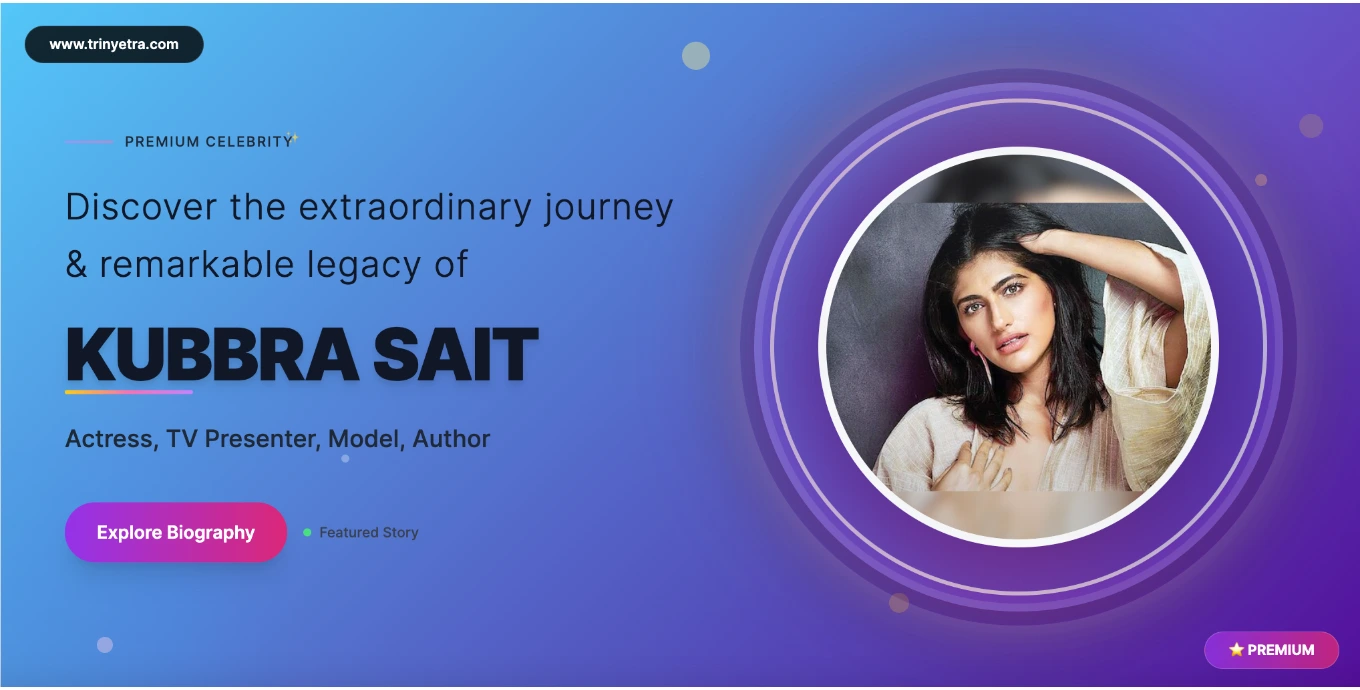
Kubbra Sait Biography, Age, Net Worth, Sacred Games, Mov...
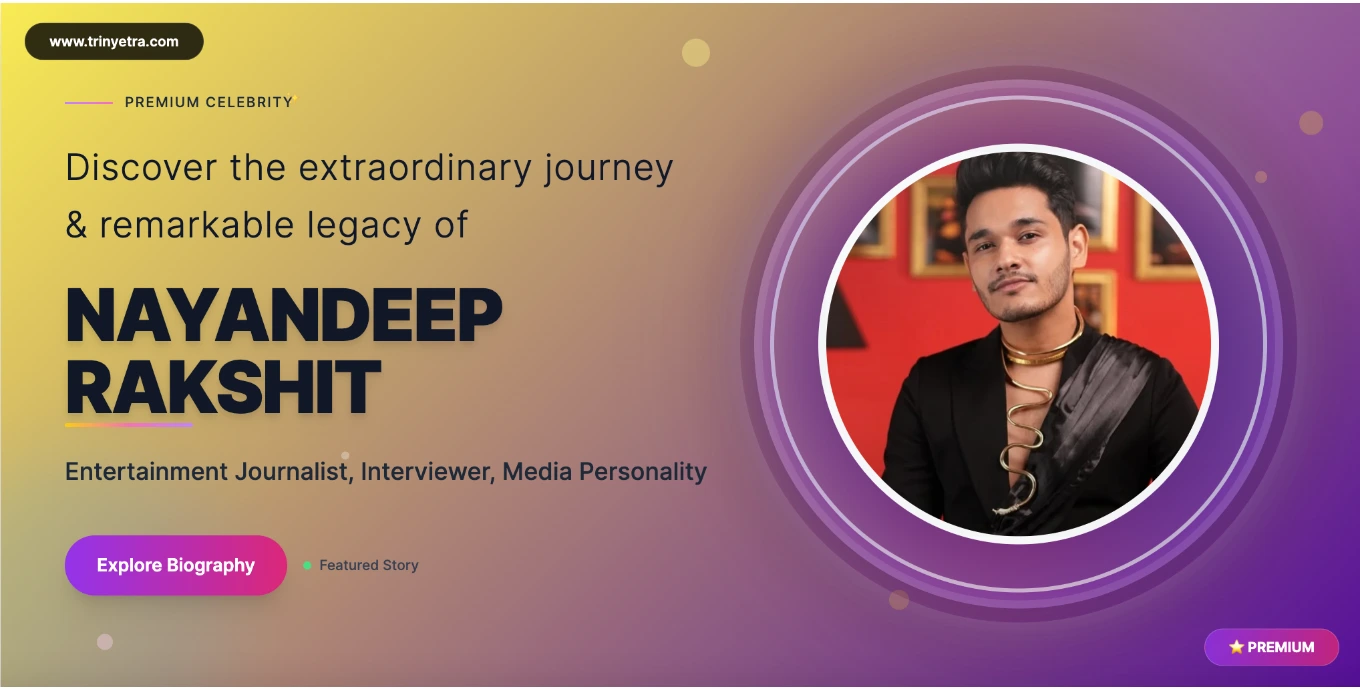
Nayandeep Rakshit Biography, Age, Net Worth, Career & Facts
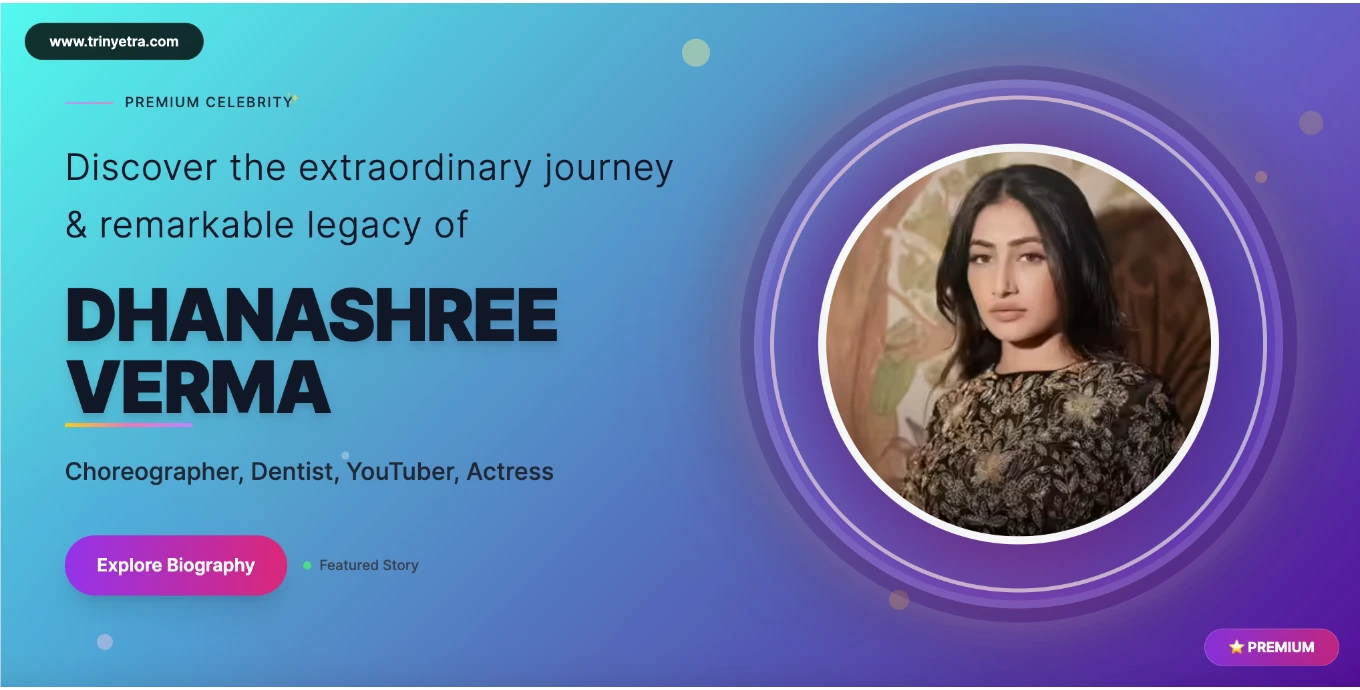
Dhanashree Verma Biography, Age, Net Worth, Dance Career...

Neha Kakkar Lifestyle, Automobiles, Family, Husband & More
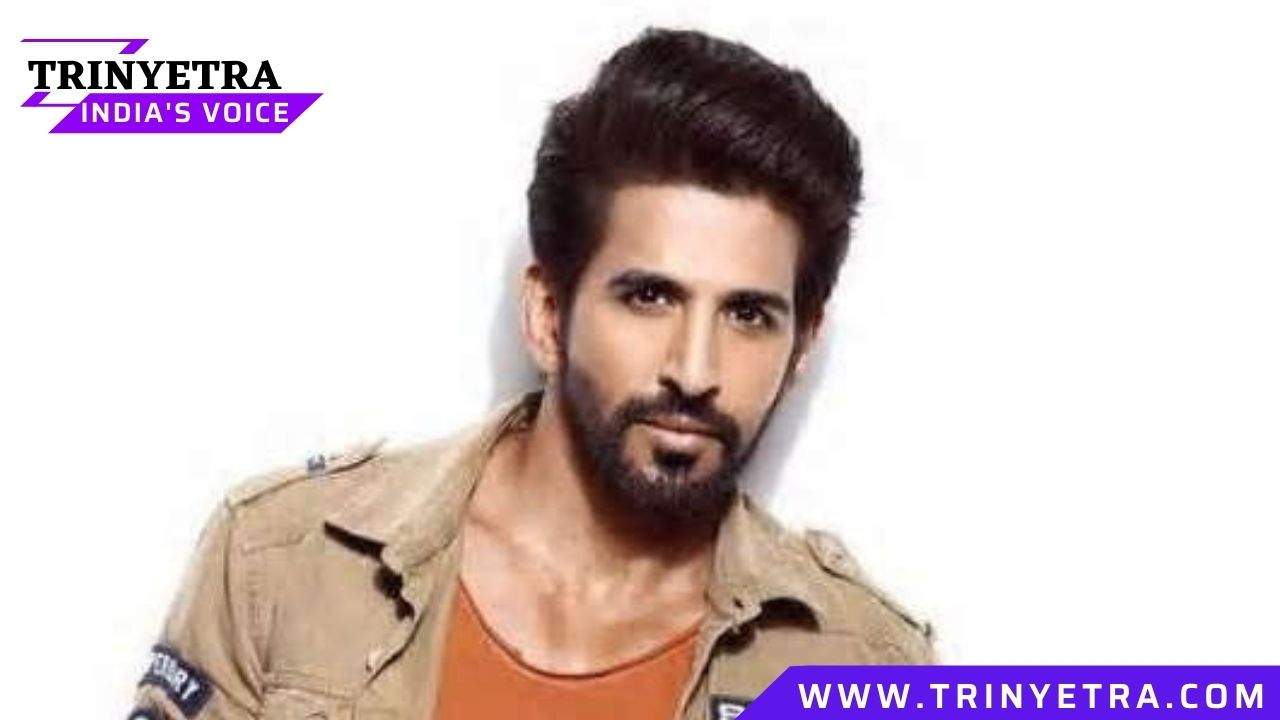
Vishal Kotian Lifestyle, Automobile, Age, Family, Affair...

Shamita Shetty Lifestyle, Automobiles, Property, Net Wor...

Amit Todon Lifestyle, Automobiles, Height, Age, Family &...

Priya Banerjee Lifestyle, Automobiles, Height, Age, Fami...

Jay Bhanushali Lifestyle, Automobiles, Affairs, Family, ...
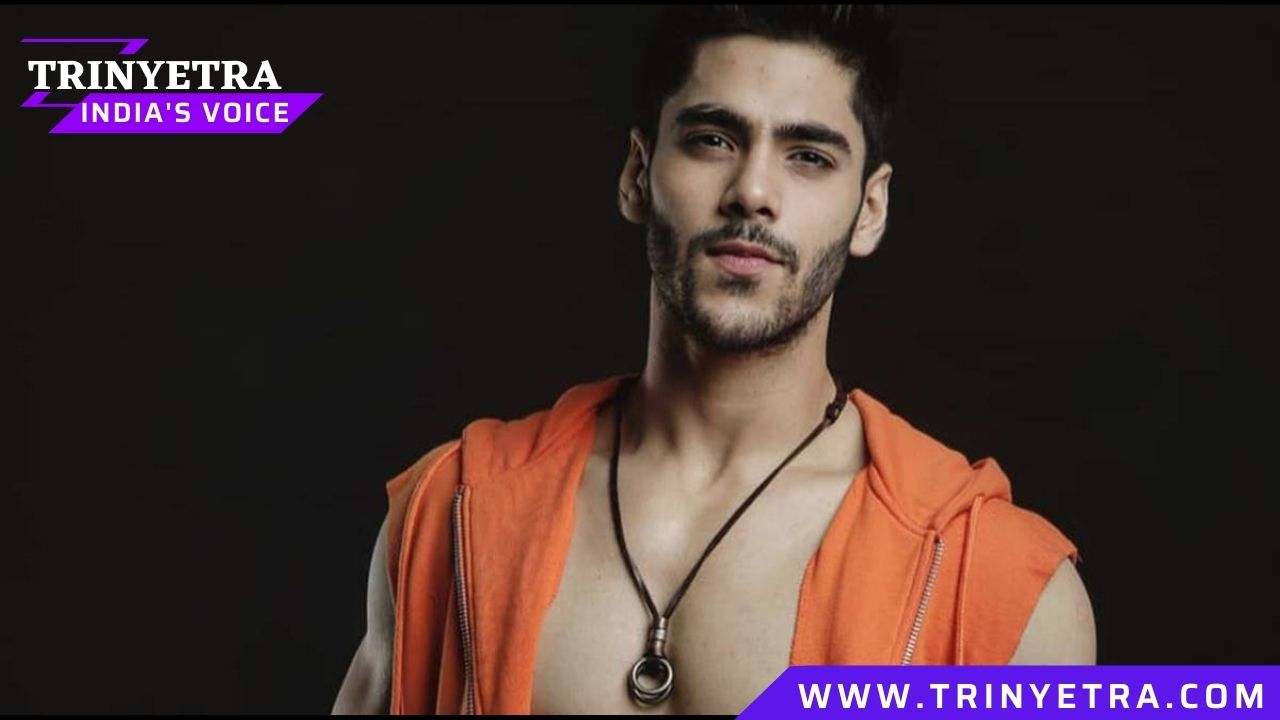
Simba Nagpal Lifestyle, Automobiles, Height, Age, Family...
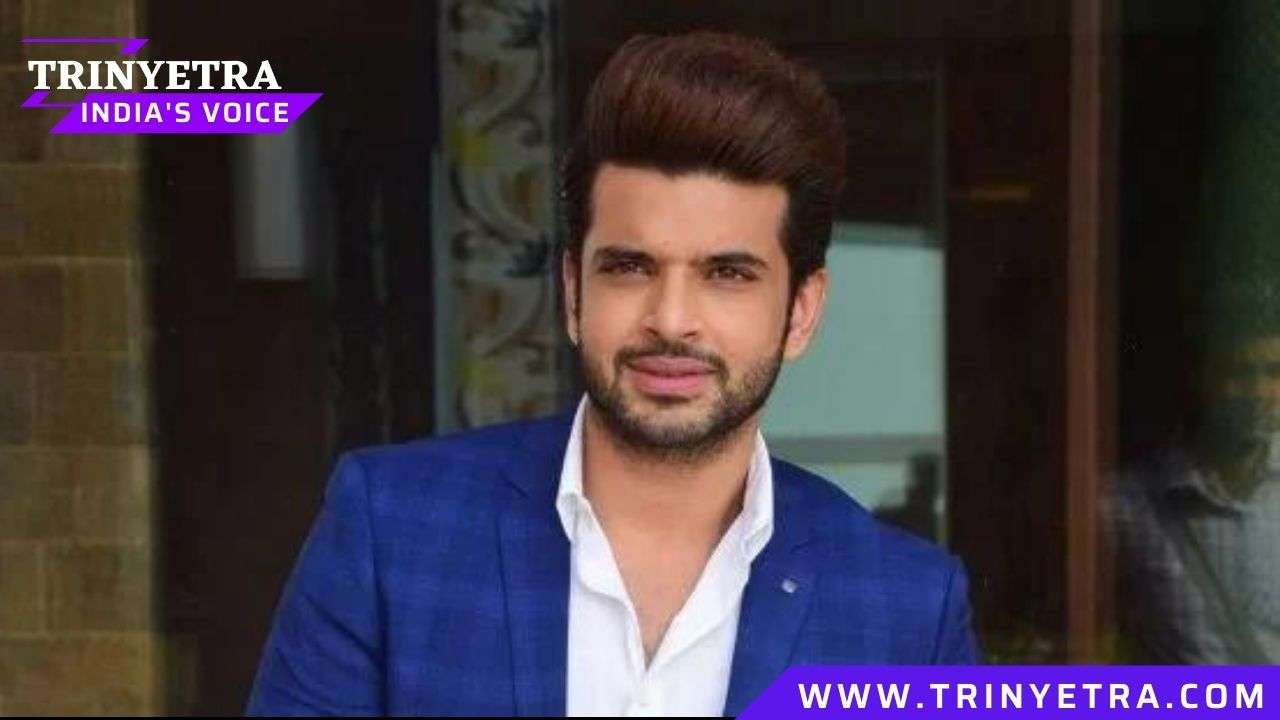
Karan Kundra Lifestyle, Automobiles, Height, Age, Family...

Miesha Iyer (Bigg Boss 15) Lifestyle, Automobiles, Heigh...

Hrithik Roshan Lifestyle, Automobiles, Height, Age, Fami...

Sharvari Wagh Upcoming Movies, Relationships, Age, Heigh...

Pratik Sehajpal (Bigg Boss 15) Lifestyle, Automobiles, H...

Priyanka Chopra (Jonas) Controversies, Husband, Age & Ma...
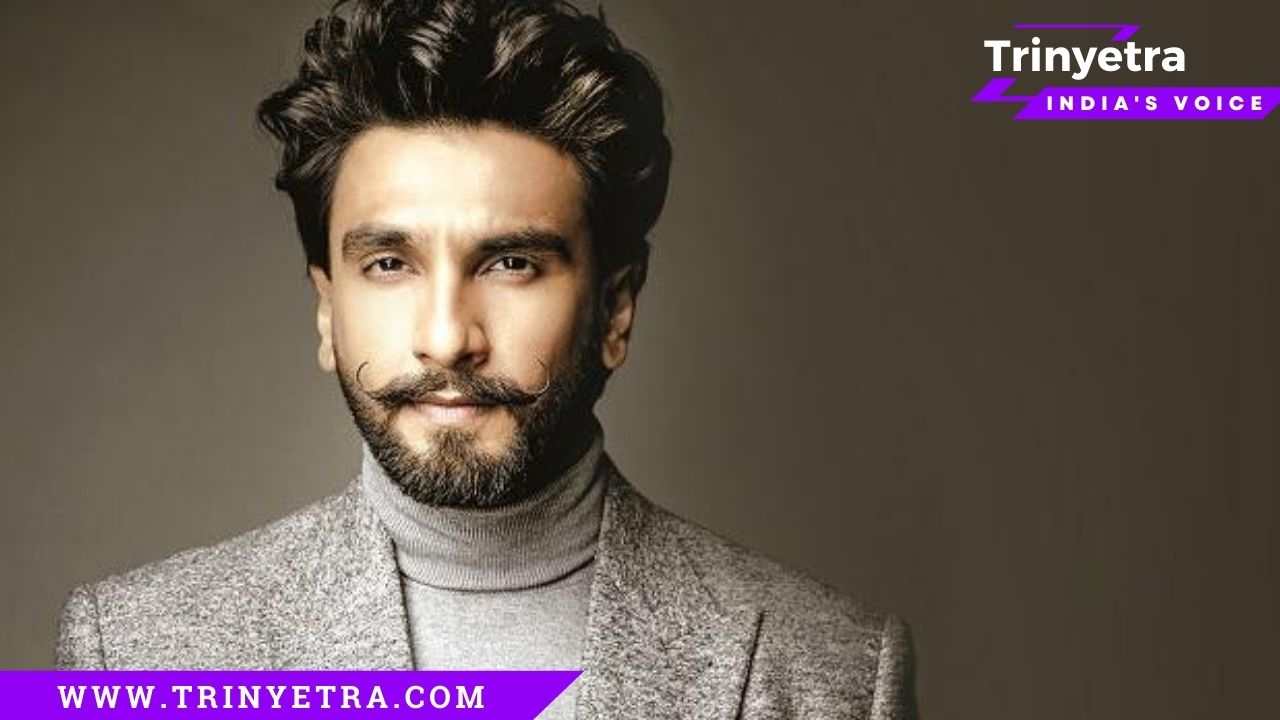
Ranveer Singh (83 movie) Biography, Affairs, Cars, Sala...

Deepika Padukone (83 FIlm) Biography, Affairs, Salary & ...

Donal Bisht (Bigg Boss 15) Lifestyle, Automobiles, Heigh...

Salman Yusuff Khan Lifestyle, Automobiles, Height, Age, ...
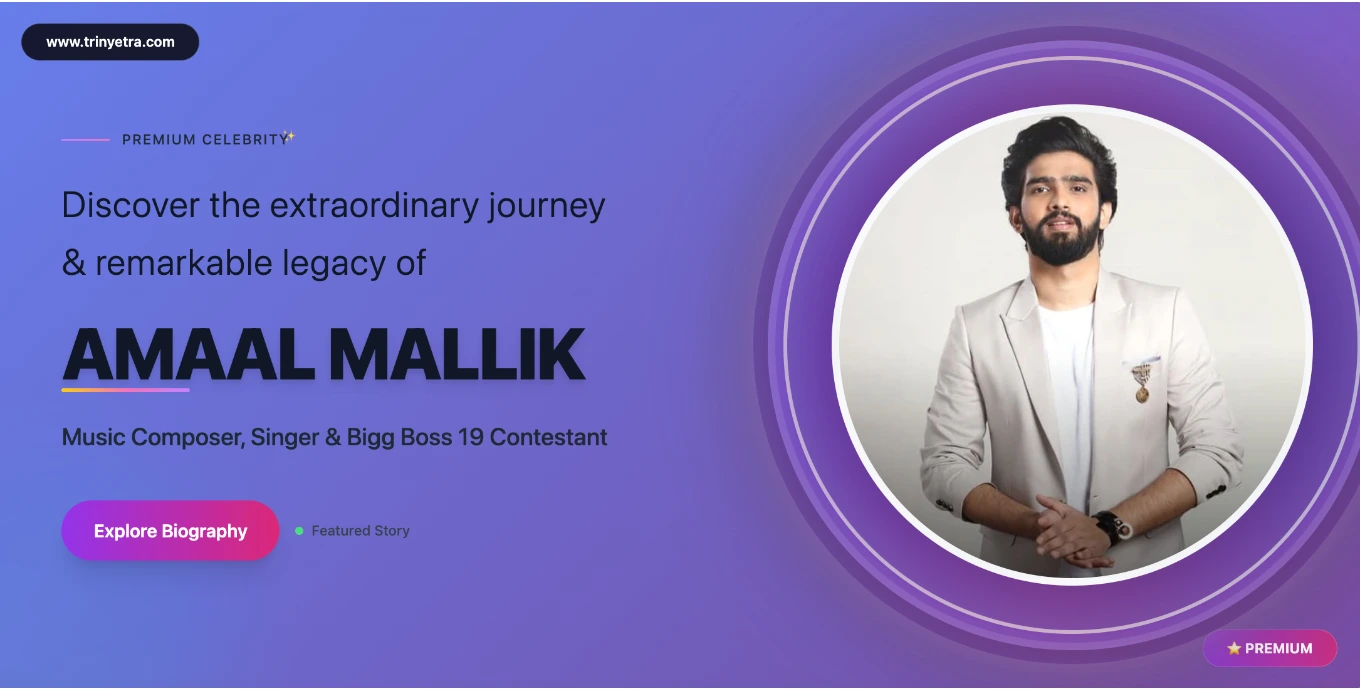
Amaal Mallik Biography, Age, Net Worth, Height, Movies &...
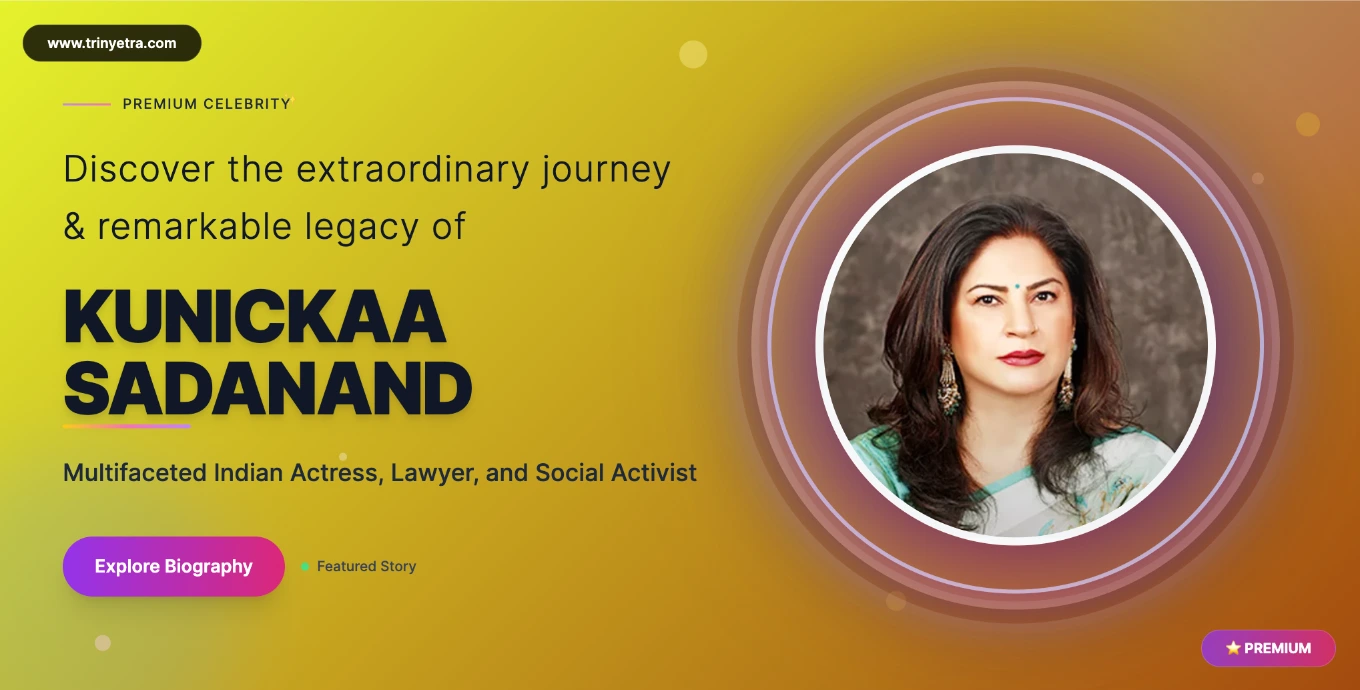
Kunickaa Sadanand Bigg Boss 19 Biography, Age, Net Worth...
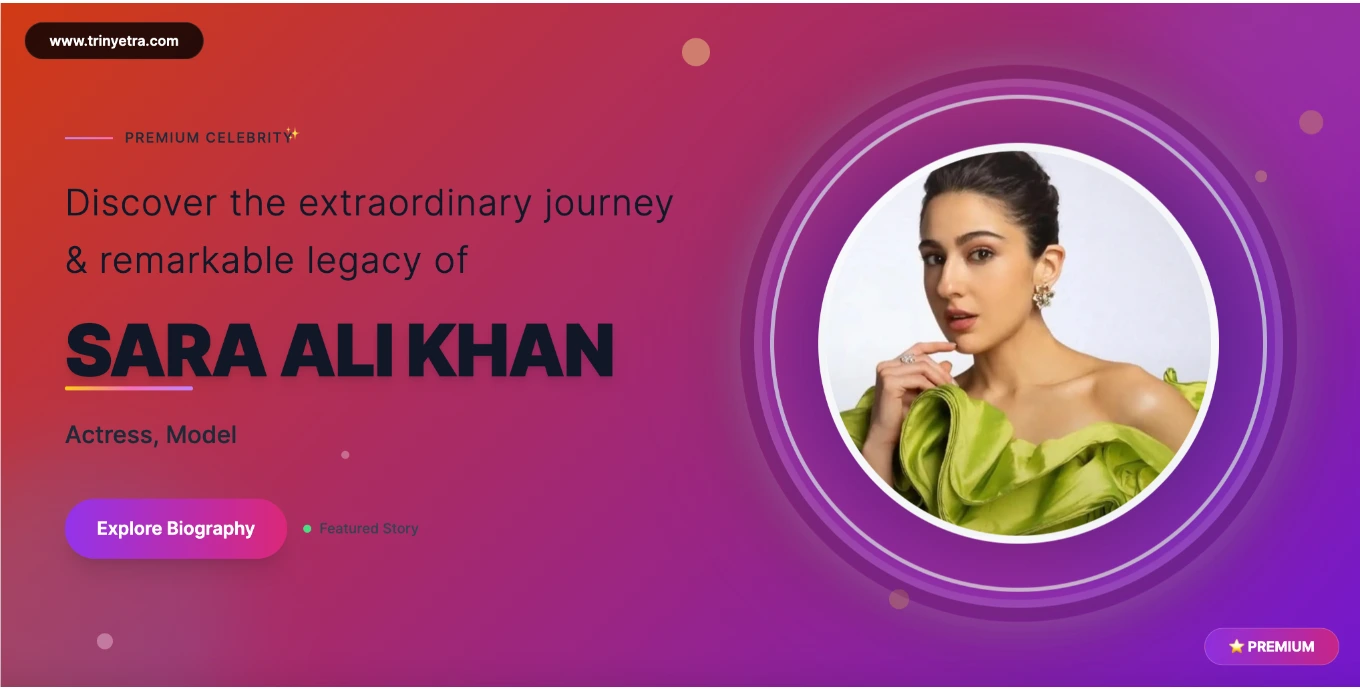
Sara Ali Khan Biography: Bollywood Icon, Age, Net Worth ...
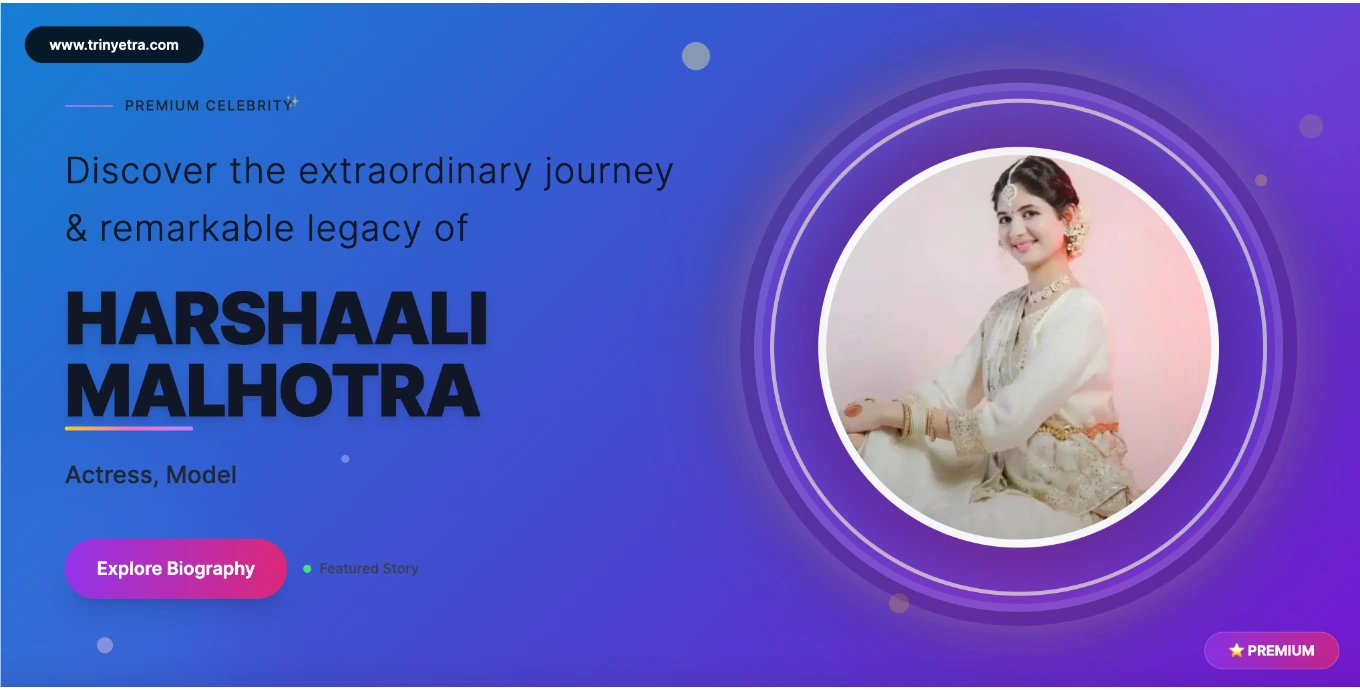
Harshaali Malhotra Biography, Age, Net Worth, Bollywood ...
